JavaScript seems to be disabled in your browser. For the best experience on our site, be sure to turn on Javascript in your browser.
BUNDLE & SAVE 10% Discount applied at checkout when you combine an in-stock Tank and Pump! Discover Savings
Best Freight Rates Every Time!
- Retail Locations
- Order Status
(866) 926-5603
- Compare Products

- Marine and RV Tanks
- Marine Tanks

Marine Water Tanks
Shop by gallon capacity.
Items 1 - 50 of 290
| Capacity | Name | Size | Diameter | Length | Width | Height | SKU | Price | |
|---|---|---|---|---|---|---|---|---|---|
| 4.25 Gallons | RW-B525 Ronco Plastics | 26 L 22 W 7 H | 26 | 22 | 7 | RW-B525 | $148.00 | ||
| 5 Gallons | RW-B410 Ronco Plastics | 18 L 14 W 7 H | 18 | 14 | 7 | RW-B410 | $147.00 | ||
| 5 Gallons | RW-B303 Ronco Plastics | 25 L 12 W 6 H | 25 | 12 | 6 | RW-B303 | $147.00 | ||
| 6.5 Gallons | RW-B533 Ronco Plastics | 27 L 17 W 5 H | 27 | 17 | 5 | RW-B533 | $201.00 | ||
| 7 Gallons | RW-56W Ronco Plastics | 21 L 13 W 8 H | 21 | 13 | 8 | RW-56W | $201.00 | ||
| 7 Gallons | RW-B395 Ronco Plastics | 27 L 15 W 5 H | 27 | 15 | 5 | RW-B395 | $165.00 | ||
| 8 Gallons | RW-B121 Ronco Plastics | 33 L 7 W 11 H | 33 | 7 | 11 | RW-B121 | $183.00 | ||
| 8 Gallons | RW-B280 Ronco Plastics | 18 L 15 W 10 H | 18 | 15 | 10 | RW-B280 | $201.00 | ||
| 9 Gallons | RW-DF009-RC Ronco Plastics | 19 L 16 W 8 H | 19 | 16 | 8 | RW-DF009-RC | $234.00 | ||
| 9 Gallons | RW-B304 Ronco Plastics | 27 L 15 W 6 H | 27 | 15 | 6 | RW-B304 | $183.00 | ||
| 9 Gallons | RW-B321 Ronco Plastics | 18 L 17 W 11 H | 18 | 17 | 11 | RW-B321 | $187.00 | ||
| 9 Gallons | RW-B442 Ronco Plastics | 19 L 16 W 9 H | 19 | 16 | 9 | RW-B442 | $183.00 | ||
| 9 Gallons | RW-B336 Ronco Plastics | 25 L 15 W 6 H | 25 | 15 | 6 | RW-B336 | $183.00 | ||
| 10 Gallons | RW-B495 Ronco Plastics | 33 L 33 W 12 H | 33 | 33 | 12 | RW-B495 | $256.00 | ||
| 10 Gallons | RW-B323 Ronco Plastics | 32 L 19.5 W 4.75 H | 32 | 19.5 | 4.75 | RW-B323 | $201.00 | ||
| 10 Gallons | RW-B365 Ronco Plastics | 18 L 13 W 11 H | 18 | 13 | 11 | RW-B365 | $201.00 | ||
| 10 Gallons | RW-B278 Ronco Plastics | 12 L 12 W 10 H | 12 | 12 | 10 | RW-B278 | $220.00 | ||
| 10 Gallons | RW-B290 Ronco Plastics | 20 L 15 W 14 H | 20 | 15 | 14 | RW-B290 | $256.00 | ||
| 11 Gallons | RW-14W Ronco Plastics | 24 L 7 W 9 H | 24 | 7 | 9 | RW-14W | $220.00 | ||
| 11 Gallons | RW-16W Ronco Plastics | 18 L 16 W 13 H | 18 | 16 | 13 | RW-16W | $220.00 | ||
| 11 Gallons | RW-B375 Ronco Plastics | 17 L 16 W 11 H | 17 | 16 | 11 | RW-B375 | $220.00 | ||
| 12 Gallons | RW-B124 Ronco Plastics | 20 L 12 W 12 H | 20 | 12 | 12 | RW-B124 | $220.00 | ||
| 12 Gallons | RW-B255 Ronco Plastics | 17 L 17 W 11 H | 17 | 17 | 11 | RW-B255 | $220.00 | ||
| 12 Gallons | RW-B441 Ronco Plastics | 16 L 16 W 15 H | 16 | 16 | 15 | RW-B441 | $220.00 | ||
| 12 Gallons | RW-B199 Ronco Plastics | 24 L 18 W 10 H | 24 | 18 | 10 | RW-B199 | $275.00 | ||
| 12.5 Gallons | RW-B548 Ronco Plastics | 24 L 14 W 10 H | 24 | 14 | 10 | RW-B548 | $220.00 | ||
| 13 Gallons | RW-11W Ronco Plastics | 21 L 13 W 13 H | 21 | 13 | 13 | RW-11W | $225.00 | ||
| 13 Gallons | RW-37W Ronco Plastics | 30 L 21 W 8 H | 30 | 21 | 8 | RW-37W | $220.00 | ||
| 13 Gallons | RW-B262 Ronco Plastics | 16 L 16 W 15 H | 16 | 16 | 15 | RW-B262 | $220.00 | ||
| 13 Gallons | RW-B266 Ronco Plastics | 19 L 15 W 14 H | 19 | 15 | 14 | RW-B266 | $220.00 | ||
| 13 Gallons | RW-B102 Ronco Plastics | 27 L 21 W 12 H | 27 | 21 | 12 | RW-B102 | $256.00 | ||
| 13 Gallons | RW-B218 Ronco Plastics | 48 L 10 W 9 H | 48 | 10 | 9 | RW-B218 | $256.00 | ||
| 13 Gallons | RW-B419 Ronco Plastics | 37 L 17 W 10 H | 37 | 17 | 10 | RW-B419 | $348.00 | ||
| 13 Gallons | RW-B436 Ronco Plastics | 37 L 11 W 10 H | 37 | 11 | 10 | RW-B436 | $293.00 | ||
| 14 Gallons | RW-B238 Ronco Plastics | 25 L 25 W 15 H | 25 | 25 | 15 | RW-B238 | $256.00 | ||
| 14 Gallons | RW-B265 Ronco Plastics | 18 L 17 W 15 H | 18 | 17 | 15 | RW-B265 | $246.00 | ||
| 14 Gallons | RW-B274 Ronco Plastics | 16 L 16 W 16 H | 16 | 16 | 16 | RW-B274 | $220.00 | ||
| 14 Gallons | RW-B160 Ronco Plastics | 17 L 17 W 16 H | 17 | 17 | 16 | RW-B160 | $275.00 | ||
| 15 Gallons | RW-B264 Ronco Plastics | 22 L 14 W 10 H | 22 | 14 | 10 | RW-B264 | $220.00 | ||
| 15 Gallons | RW-B492 Ronco Plastics | 28 L 28 W 12 H | 28 | 28 | 12 | RW-B492 | $220.00 | ||
| 15 Gallons | RW-B251 Ronco Plastics | 28 L 23 W 10 H | 28 | 23 | 10 | RW-B251 | $225.00 | ||
| 15 Gallons | RW-B173 Ronco Plastics | 21 L 18 W 14 H | 21 | 18 | 14 | RW-B173 | $238.00 | ||
| 16 Gallons | RW-B500 Ronco Plastics | 38 L 13 W 11 H | 38 | 13 | 11 | RW-B500 | $238.00 | ||
| 16 Gallons | RW-36W Ronco Plastics | 23 L 26 W 9 H | 23 | 26 | 9 | RW-36W | $243.00 | ||
| 16 Gallons | RW-B399 Ronco Plastics | 31 L 14 W 13 H | 31 | 14 | 13 | RW-B399 | $311.00 | ||
| 16 Gallons | RW-B107 Ronco Plastics | 23 L 19 W 16 H | 23 | 19 | 16 | RW-B107 | $238.00 | ||
| 16 Gallons | RW-B109 Ronco Plastics | 21 L 19 W 12 H | 21 | 19 | 12 | RW-B109 | $238.00 | ||
| 16 Gallons | RW-B111 Ronco Plastics | 44 L 14 W 12 H | 44 | 14 | 12 | RW-B111 | $275.00 | ||
| 16 Gallons | RW-B122 Ronco Plastics | 36 L 17 W 10 H | 36 | 17 | 10 | RW-B122 | $238.00 | ||
| 16 Gallons | RW-B125 Ronco Plastics | 12 L 12 W 18 H | 12 | 12 | 18 | RW-B125 | $256.00 |
- You're currently reading page 1
- California 290 items
- Less than 10 Gallons 18 items
- 11 to 25 Gallons 119 items
- 26 to 50 Gallons 103 items
- 51 to 100 Gallons 37 items
- 101 to 250 Gallons 12 items
- 251 to 500 Gallons 1 item
- Ronco Plastics 290 items
- Water Tanks 290 items
- Polyethylene 290 items
- Marine Tanks 290 items
- Tanks 290 items
- Remove This Item
- Add to Cart Add to Cart Remove This Item
- Privacy Policy
- Terms and Conditions
- Custom Roto Mold Tanks
- Chemical Tanks
- Fiberglass Tanks
- 500 Gallon Water Trailer
- 1000 Gallon Water Trailer
- 1600 Gallon Water Trailer
- Get a Quote
Marine Water Tanks
Custom fitted for no leaks.
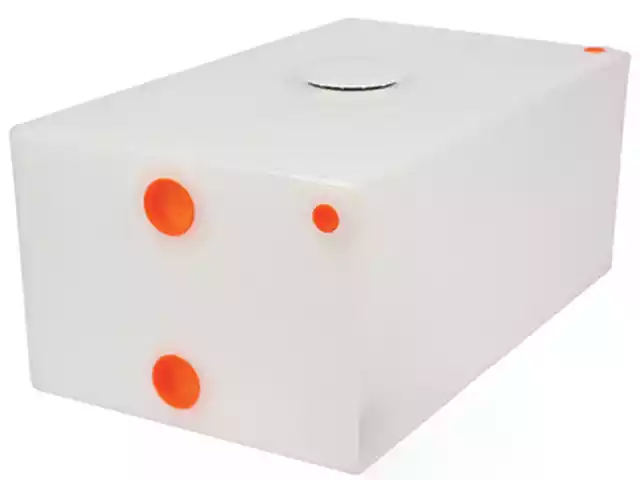
We take immense pride in tailoring robust and long-lasting marine tanks to your precise specifications, ensuring a flawless and leakproof fit for your marine needs. Specifically designed for potable water storage, our marine fresh water tanks comply with FDA regulation CFR 177.1520 and Coast Guard Standards. Enclosed entirely, these poly water storage tanks feature walls that are a formidable 3/8" thick, providing exceptional strength and ensuring a prolonged service life.
Marine Holding Tank Sizes and Specs
| Marine Holding Tanks | Part Number | Details |
|---|---|---|
Custom Marine Water Storage Tanks
Enjoy the exceptional quality of our marine fresh water tanks, skillfully crafted using FDA-approved, virgin polyethylene plastic resin. Designed specifically for storing potable water in various marine vessels such as sailboats, yachts, and deep-sea fishing boats, these tanks offer the perfect blend of durability and practicality. With their seamless, one-piece construction, you can rely on these marine tanks to provide a dependable water storage solution. Bid farewell to concerns about cracks or weakening over time, as our plastic marine tanks are built to withstand the demanding conditions of marine environments.
To enhance convenience, these tanks are equipped with strategically positioned female NPT openings on one end, ensuring compatibility with marine plumbing systems. This thoughtful design facilitates seamless integration and simplifies installation. The inclusion of spin welded fittings guarantees protection against leaks and provides a secure fit.
At One Clarion, we take pride in delivering the highest quality marine tanks available on the market. Trust us to provide you with a reliable solution for your marine water storage needs.
Should you require a tank of a unique size or shape, our knowledgeable team members are ready to assist you every step of the way. We are committed to helping you acquire the ideal tank that perfectly aligns with your specific project requirements. Reach out to us today and discover the difference of our premium marine fresh water tanks.
For more detailed information, please refer to our Marine Water Tanks (pdf)
Simple Ordering Process
Our commitment to excellence drives us to provide the highest quality custom marine water tanks for your unique projects. Unlike pre-drilled tanks, these tanks offer a blank canvas, allowing you to precisely place holes and fittings exactly where you need them. This flexibility ensures that your custom boat water tank can pivot to fit seamlessly into your available space.
Here's how our streamlined ordering process works:
- Begin by completing a tank drawing, accurately depicting your tank dimensions and specifications. Clearly indicate on the drawing where you require the ports on your tank, providing precise measurements and locations. Submit the drawing to us using either the contact form or email , along with your specific requirements.
- Once our experienced team reviews your drawing, we will promptly reach out to you with valuable feedback and suggestions to optimize your tank design.
- We work closely with you, refining the design until you are completely satisfied. Once the design is finalized, we process your order efficiently and promptly.
- We encourage you to provide as much specific information as possible regarding your tank's size and location requirements. If you have any uncertainties or need guidance throughout the process, our dedicated team is readily available to assist you, ensuring necessary adjustments are made.
*Please note that mounting straps are not included with this tank, and it is not suitable for use with gasoline fuel storage. If you require a different type of tank, our team will gladly assist you in finding the perfect custom tank that precisely fits your specific needs.
Choose us for exceptional custom marine water tanks that are tailored to your project requirements!
Roto Molding for Marine Water Tanks
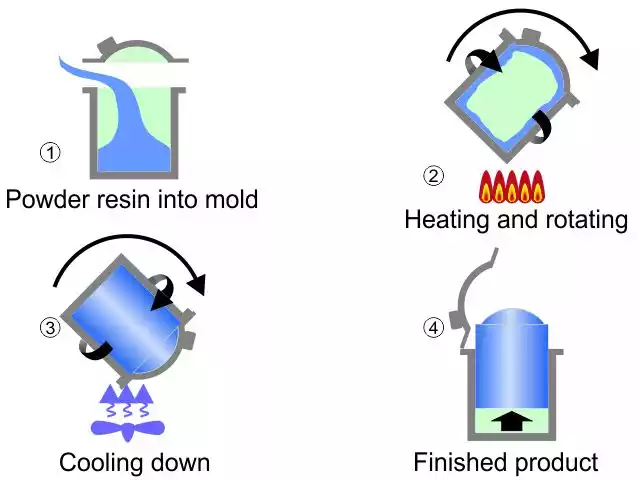
Marine Water Tank Accessories
At One Clarion, we take immense pride in our position as an industry leader, dedicated to meeting your specific requirements. We understand the importance of customization, which is why we offer tanks that can be tailored to fit your precise dimensions and specifications. To ensure a secure plumbing connection, we utilize spin weld fittings, guaranteeing a reliable and leak-free solution.
Should your project demand a unique size or shape beyond our existing offerings, we are more than capable of accommodating your needs. Our expertise extends to creating custom molds, allowing us to provide a truly bespoke solution for your specific requirements. Trust One Clarion to deliver exceptional quality and unmatched flexibility for your tank needs.
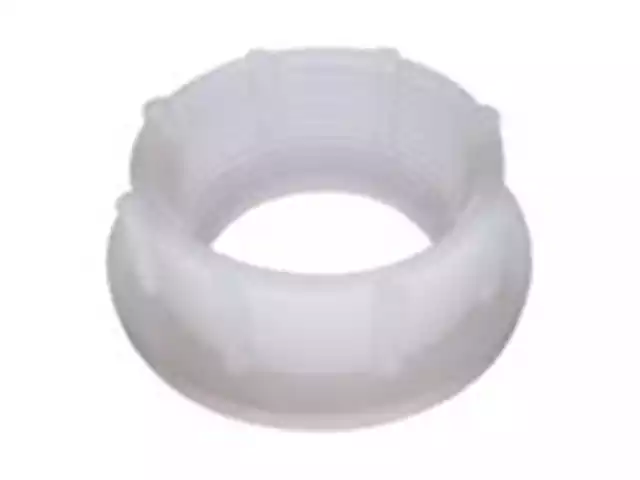
Secure and Durable Connections with Spin Welding To ensure the utmost strength and longevity of our holding tanks and fresh water tanks, we employ the reliable technique of spin welding. This straightforward yet effective process involves securely attaching polyethylene fittings to the tanks, resulting in a robust and long-lasting permanent joint connection. The use of spin welding not only creates a strong bond but also delivers a polished and seamless finish.
We offer the flexibility to customize fittings for your tanks, guaranteeing a precise fit that is both secure and watertight. Our fittings seamlessly integrate with your tanks, providing a reliable solution tailored to your specific needs. You can trust in the durability and dependability of our tanks, fortified by the exceptional quality of spin welding connections.
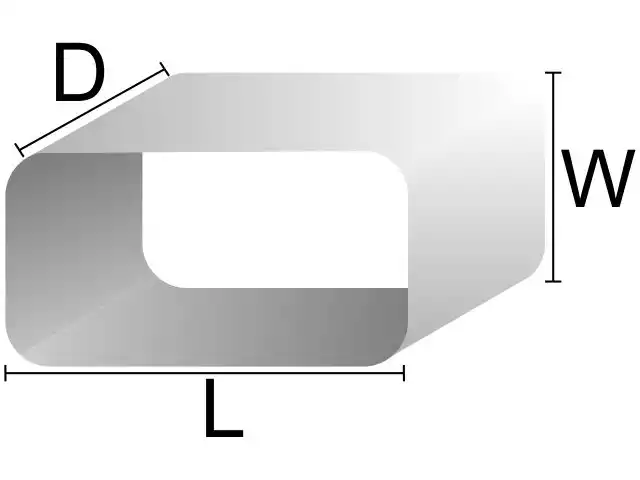
Sturdy, Secure Storage: In addition to our comprehensive range of products, we also offer a diverse selection of custom, watertight compartments designed to cater to your unique storage requirements. Our assortment includes rounded corner open-ended compartments, square corner open-ended compartments, as well as square corner top and end compartments, available in a variety of sizes. These meticulously crafted compartments are specifically designed to provide both convenience and versatility, guaranteeing efficient organization and storage solutions for your boat. Experience the ultimate in tailored storage with our custom compartments, ensuring your belongings are securely and neatly stowed away during your marine adventures.
For a comprehensive list of boat storage containers, please refer to our dedicated section .
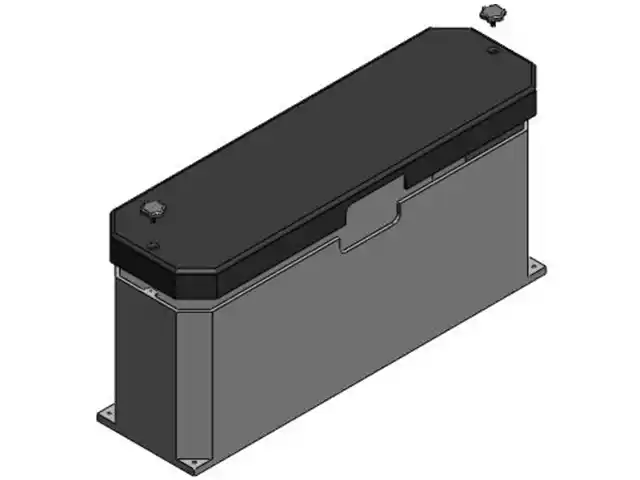
Battery Boxes Protect your battery with our selection of battery boxes meticulously designed to deliver essential protection for your marine battery. Engineered with precision, these battery boxes are specifically crafted to safeguard against tipping, accidental short-circuits, and corrosion, ensuring optimal performance and prolonged battery life.
With our battery boxes, you can enjoy peace of mind, knowing that your marine battery is securely housed and shielded from potential hazards. Invest in the protection your battery deserves and embark on worry-free boating experiences. Trust our battery boxes to provide the reliability and security you need for your marine adventures.
- Battery Box GRP-31-S
- Double Battery Box End X End GRP-31-DE
- Double Battery Box Side X Side GRP-31-DS
- Optima Battery Box GRP-34-SO
Sustainable Custom Plastic Storage

These custom plastic marine tanks give a sustainable solution for environmental friendly water storage. Manufactured with non-toxic material, tanks have a low carbon emission during their life cycle. Our tanks can withstand corrosion, are leak proof, resist UV damage, and last longer than other tanks. Reduce your carbon footprint with these flexible, cost-effective plastic marine tanks.
Enjoy unparalleled customization options with this Marine Fresh Water Tank, tailored to meet your precise specifications for size, shape, and fit. Whether you require a water storage tank for your boat or any other marine tank, we specialize in creating the perfect solution to suit your project requirements.
To explore our extensive range of custom boat water tanks and other marine tanks, we invite you to speak with one of our knowledgeable team members. They will provide you with detailed information, guiding you through the process of selecting the ideal tank that perfectly aligns with your needs.
Don't settle for anything less than perfection when it comes to your marine water storage. Contact us today and let us assist you in finding the ideal custom solution for your boat water tank and other marine tank needs.
Products Customers Also Viewed
Plastic Water Tanks
JavaScript seems to be disabled in your browser. For the best experience on our site, be sure to turn on Javascript in your browser.
BUNDLE & SAVE 10% Discount applied at checkout when you combine an in-stock Tank and Pump! Discover Savings
Best Freight Rates Every Time!
- Order Status
(866) 310-2556
- Compare Products

- RV and Marine
- Marine Water Tanks
Marine water tanks are made to easily be installed on your boat, yacht, cruiser or any other marine vessels. Marine water tanks and boat tanks are designed for storing potable water in boats and vessels equipped with plumbing. Our marine water tanks are manufactured by industry leaders including Ronco and Todd.
Marine freshwater tanks are durable and offer a long-life expectancy. They’re available for most boat makes and models and can be used as either a new or replacement water tank. custom-molded tanks are available upon request and our marine water tank sizes range from 3 gallons to 260 gallons.
If you're after a durable water tank made to hold up to the rigors of sea travel, then these are the tanks for you.
Some additional specifications include:
- 3/8" Wall Thickness
- Fittings Installed Where You Need Them
- Tank Dimensions Can Rotate to Fit Your Needs
- Manufacturers: Ronco, Todd, Trionic
*Replacement custom made marine holding tank available by request. **Marine Water Tanks are manufactured from Food Grade FDA approved Virgin Polyethylene Poly Resins
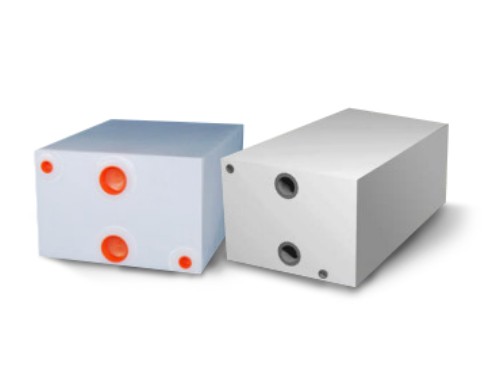
22 W
7 H
14 W
7 H
12 W
6 H
17 W
5 H
13 W
8 H
15 W
5 H
7 W
11 H
15 W
10 H
15 W
6 H
17 W
11 H
16 W
9 H
16 W
8 H
15 W
6 H
19.5 W
4.75 H
13 W
11 H
33 W
12 H
12 W
10 H
15 W
14 H
7 W
9 H
16 W
13 H
16 W
11 H
12 W
12 H
17 W
11 H
16 W
15 H
18 W
10 H
14 W
10 H
13 W
13 H
21 W
8 H
16 W
15 H
15 W
14 H
21 W
12 H
10 W
9 H
17 W
10 H
11 W
10 H
25 W
15 H
17 W
15 H
16 W
16 H
17 W
16 H
14 W
10 H
23 W
10 H
28 W
12 H
18 W
14 H
26 W
9 H
14 W
13 H
13 W
11 H
19 W
16 H
19 W
12 H
14 W
12 H
17 W
10 H
12 W
18 H
- You're currently reading page 1
- California 290 items
- Less than 10 Gallons 18 items
- 11 to 25 Gallons 119 items
- 26 to 50 Gallons 103 items
- 51 to 100 Gallons 37 items
- 101 to 250 Gallons 12 items
- 251 to 500 Gallons 1 item
- Ronco Plastics 290 items
- Water Tanks 290 items
- Polyethylene 290 items
- Marine Tanks 290 items
- Tanks 290 items
- Vertical Plastic Water Tanks
- Underground Water Storage Tanks
- Portable Plastic Water Storage Tanks
- Doorway Water Tanks
- Cradle Water Tanks
- Emergency Water Tanks
- Forkliftable Water Tanks
- IBC Totes and Caged Water Tanks
- Onion Water Tanks
- Plastic Stock Tanks - Water Troughs
- Steel Metal Storage Tanks
- Transport Tanks
- Truck Bed Plastic Water Tanks
- Vertical Liquid Storage Tanks
- Horizontal Leg Tanks
- Cone Bottom Tanks
- Stackable Liquid Storage Tanks
- Bladder Tanks
- Brine Storage Tanks
- Containment Tanks & Basins
- Double Wall Tanks
- Low Profile Hauling & Storage Tanks
- Open Top Plastic Tanks
- Polypropylene Tanks
- Portable Spot Sprayer Tanks
- Pressure Wash / Auto Detail Tanks
- Storage Tanks Accessories
- Utility Tanks
- Rainwater Collection
- Underground Rainwater Tanks
- Rain Barrels
- Rainwater Accessories
- Steel Rainwater Harvesting Tanks
- U.S. Septic Tanks By State
- IAPMO Approved Septic Tanks
- Job Shack Holding Tanks
- Black Water Tanks
- Norwesco Bruiser Tanks
- Plastic Septic Tanks
- Rectangular Water & Waste Tanks
- Septic Accessories
- RV Water Tanks
- RV Holding Tanks
- Marine Holding Tanks
- Waste Oil Tanks
- Fuel Transfer Pumps
- Add-ons and Accessories
- Manufacturers
- Add to Cart Add to Cart Remove This Item
- Privacy Policy
- Terms and Conditions
- Picture Gallery
- About Miller Plastics
- We’re Hiring

Starpointe Business Park 24 Todd Drive Burgettstown, PA 15021
- Marine Tanks
Custom Plastic Marine Water Tanks and Marine Waste Holding Tanks (Freshwater, Grey Water & Wastewater)
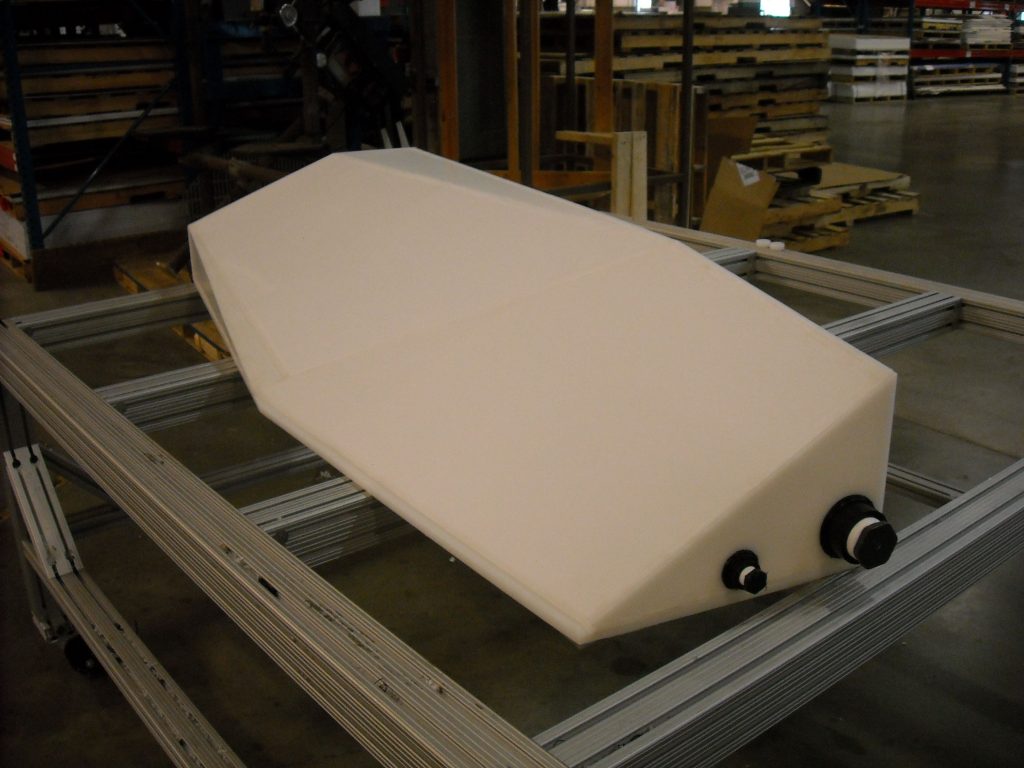
At Miller Plastic Products, we manufacture custom marine water tanks to suit a variety of needs and applications. Many larger boats have a clean water system and a wastewater system. Clean water is also known as potable or fresh water; Wastewater is known as black water or gray water.
If there’s an RV or marine water tank available in stainless steel, or aluminum, we can fabricate the same shape and size container out of lighter-weight plastic materials, including:
Polypropylene PVC Polyethylene
Request a quote for a custom marine holding tank from Miller Plastic Products below. These custom fabricated tanks start at $1,491.
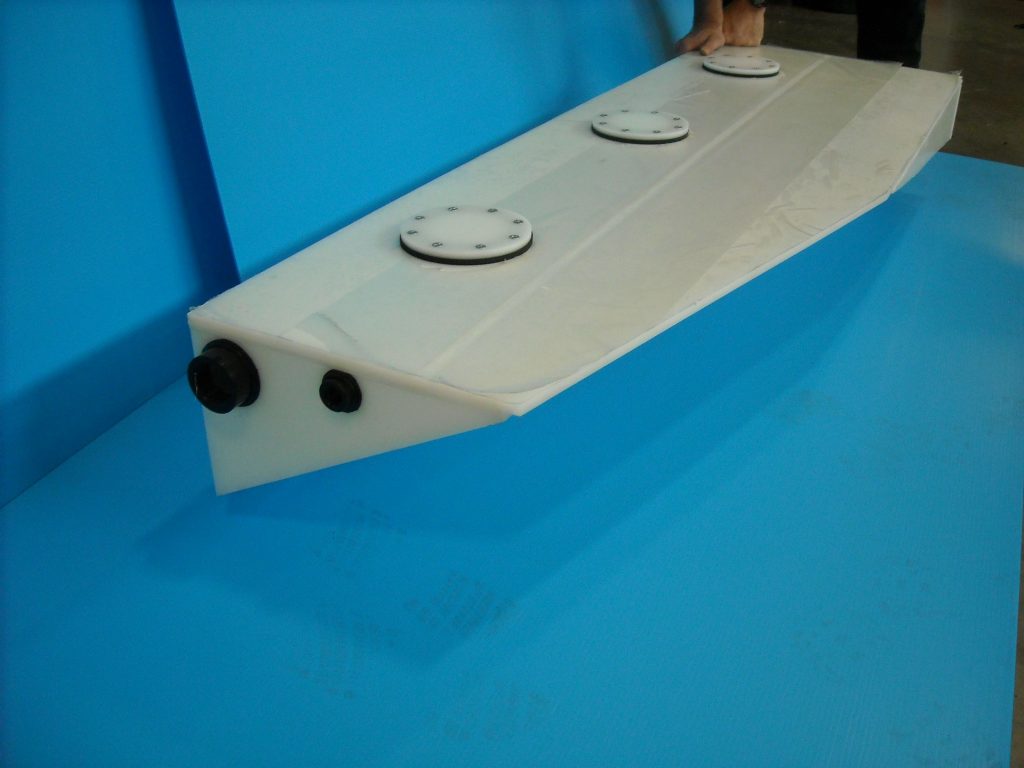
GET A CUSTOM PLASTIC TANK QUOTE
Our experience can help you choose the right material for your particular custom plastic marine water tank, RV tank, or marine waste holding tank. We’re just a phone call or click away.
We offer free design assistance and can provide 2D or 3D drawings using AutoCAD and SOLIDWORKS
Our tanks are engineered using FEA (Finite Element Analysis) to maximize performance and allow for minimal bowing of the fabrication.
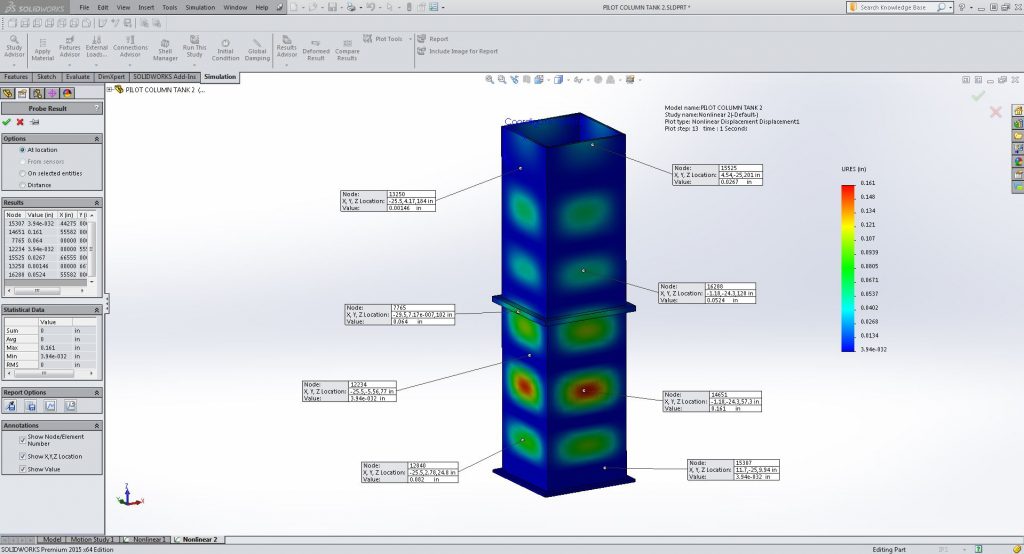
We offer a wide selection of custom plastic marine water tanks, marine waste holding tanks, and RV tanks in any size or shape to fit your need. Our tanks can also be heated for use in freezing weather. The kinds of marine tanks we can fabricate to your exact specifications include:
- Bottom Dump Waste Water Tanks
- Recessed End Dump Holding Tanks
- L-Shaped Holding and Water Tanks
- Wastewater Tanks
- Grey Water & Black Water Tanks
- Port and Starboard Tanks
- End Dump Holding Tanks
- Bow Shaped Water Tanks
- Side Dump Holding Tanks
- Fresh Water Tanks
- Holding Tanks
- Bow and Stern
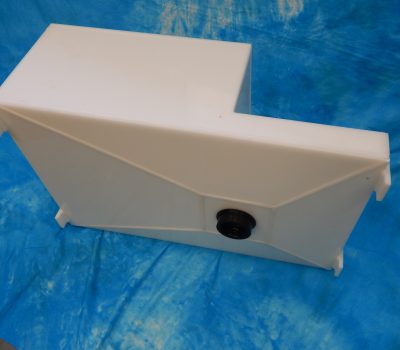
Some of the Materials We Work With Include:
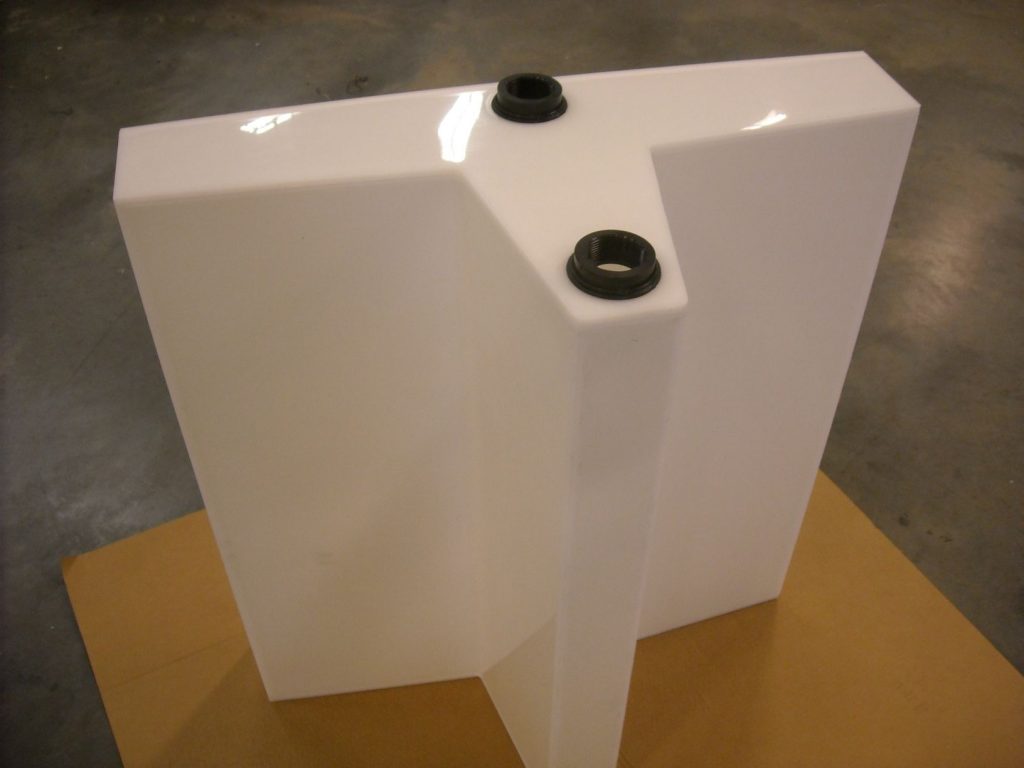
The kinds of plastic tanks we can fabricate to your exact specifications include:
- Waste Water Tanks
- Grey Water Tanks
- Custom Plastic Machining
- Plastic CNC Machining
- Plastic Gear Manufacturer
- Inspection Capabilities
- Annealing Services
- Custom Plastic Fabricators
- Plastic Heat Exchangers
- Laboratory Equipment
- Filtration Systems
- Dosing Skids
- Plastic Fabrication Supplies
- Custom Tanks
- Plastic Plating Tanks
- Pickling Tanks
- Galvanizing Tanks
- Polypropylene Plastic Containers
- Mobile Tanks
- Fire Truck Water Tanks
- Restroom Trailers
- Hydroponics
- Tank Builder
- Custom Pipe & Fittings
- Kynar Fittings
- Pipe Bending
- Polypropylene
- Plastic Industrial Float Valve Products
- Commercial 3D Printing Services
- Fume & Duct Hoods


- Search for:

- 01420 520 830
No products in the basket.
Return to shop
- Custom Tank Order Process
- Trade Customers
- Baffled Water Tanks
- Blank Baffled Tanks (Water, Waste and Fuel)
- Rectangular and Shaped Tanks
- Vertical Waste Holding Tanks
- Plastic Tank Fittings & Accessories
- Series C Water
- Series C Waste
- Series C CE Marked Fuel Tanks
- Series C Accessories
- What’s the difference?
- Custom Tanks
- Quality Series A Tanks
- Economy Series C Tanks
- Budget Series D Tanks
- Van Conversions
- Fabrication Introduction
- Battery Boxes
- Fridge & Freezer Liners
- Shower & Drip Trays
- Signage & Logo Panels
- Exhibition Display Podiums
- Custom Hatch Plates
- Plating & Dipping tanks
- Waterways & Marine
- Pods-Floats
- Vehicle Tanks
- Medical & Welfare
- Customer Installations
- Trudesign Marine Fittings
- Series C Modular Tank Modifications
- Sky Car Expedition
- Superyacht Tender Water Tank Combo
- Toilet Trailer Tanks
- Holding Tank Regulations
- Holding Tank Plumbing and Layouts
- Marine Toilets
- Odour Control General Knowledge
- Odour Control Intelligent Equipment
- Odour Filters
- Pump-Out Deck Fitting
- Routine Maintenance
- Water & Fuel Level Indicators
- Waste Level Indicators
- Ultrasonic Level Indicators
- Digital Level Indicators
- Expedition Vehicles
- Motorhome & Caravan
- Horsebox Tanks
- Specialist Vehicle and Coach Building
- Window Cleaning & Car Valeting
- Welfare Vehicles
- Sub Contract CNC
- Plastic Tank Repairs
- Rotary Moulding Service
- Series A Plastic Tanks
- Series C Plastic Tanks
- Series D Plastic Water Tanks
- RV and Campervan Tanks
- Large Storage Tanks
- Agricultural Sprayer Tanks
- Replacement Production Boat Tanks
- Plating Tanks
- Plastic Tank Accessories
- C-Warm Calorifiers and Accessories
- Grey Water Systems
- Loft Tanks and Water Butts
- TruDesign Ball Valves
- TruDesign Skin Fittings and Seacock Kits
- TruDesign Hosetails
- TruDesign Sanitation Equipment
- TruDesign Reducers, Connectors and Clips
- TruDesign Tee Piece Manifold
- TruDesign Accessories
- Water Pumps
- Grey Waste Pumps
- Black Waste Pumps
- Utility Pumps
- Complete Pressurised Water Systems
- Fuel Transfer Pumps
- Keepalive Pumps
- Pump Accessories
- Camper & Caravan Pumps A range of inline and submersible pumps suitable for use in Campervan Conversions and Caravans.
- Fuel Tank Treatments A range of fuel treatments to enhance performance and save fuel.
- Holding Tank Treatments A range of chemicals for use with holding tanks.
- Water Tank Treatments A range of chemicals for cleaning and purifying water tanks.
- Camlock Hose Connectors
- Hose and Hose Clips
- Sanitation Accessories
- Fitting Flanges
- Economy Tool Boxes
- TekBox Range and Accessories
- Special Offers
- Tek Tanks Catalogue
- Refundable Drawing Charge
- Announcements
- Simona Food Grade Declaration
- Simona PE HD Safety Data Sheet
- Simona PE HD Technical Information
- Simona Sheet Tolerances
- Privacy Policy
- Terms & Conditions
- Domestic UK Shipping and Returns Policy
- Dealer Locator
- CE Documentation
- 09:00 - 17:00
Plastic Boat Tanks
Tek-Tanks have been manufacturing plastic tanks for boat builders and boat owners since 1991. Ranging from large 1500 litre plastic diesel tanks to 1 litre plastic water manifolds, there are not many plastic tanks we have not done.
Waste holding tanks now comprise a large part of our business so we now offer plenty of information on the design of waste systems. Please see our Holding Tank Layouts for above and below waterline applications.
Perhaps we’ve already built the tank you are looking to replace. The list of available plastic tanks is forever growing.
Check if your plastic tank is available from our online store here .
If your plastic tank is not listed, then please get in touch and we’ll be happy to quote and build it for you.
For more information on how we construct our plastic custom built tanks please follow this link.
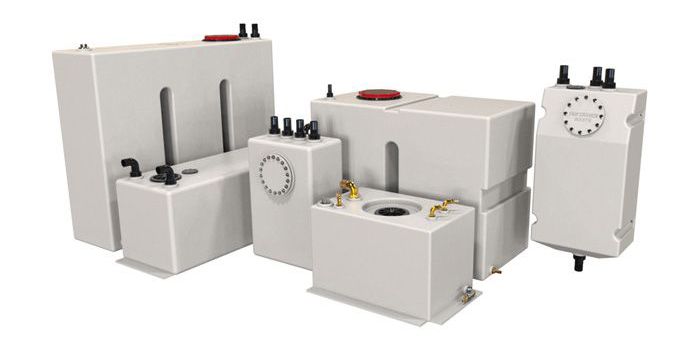
- Motorhome & Caravan
- Camper & Caravan Pumps
- Fuel Tank Treatments
- Holding Tank Treatments
- Water Tank Treatments
- Terms & Conditions

5 Best Watermakers for Sailboats

With the right Watermaker, the ocean becomes an almost immeasurable supply of fresh and clean drinking water to keep you hydrated during your offshore sailing adventures.
Many sailors do spend a lot of their time and money on various parts of the sailboat including the sails, engine, electronics, and generators especially when preparing for long-distance voyages.
While there's absolutely nothing wrong with this, they often overlook one crucial part of general human survival: having an ample supply of fresh drinking water.
Whether you have freshwater drinking tanks on your sailboat or planning to cruise in areas where you can easily access clean drinking water, the hassle involved in having to come to the dock to fill the water tanks can be quite overwhelming.
This is exactly why you need to find the best watermakers for sailboats.
Like many other nautical technologies, watermakers have significantly advanced in the last few decades to become very efficient and more reliable. They're no longer a luxury on your sailboat but a necessity. Better still, watermakers have become relatively affordable and are meant to keep you hydrated as you explore areas that do not have clean and fresh drinking water.
In this article, we'll take a look at how watermaker systems work, highlight its benefits, and highlight the best sailboat watermakers on the market right now. At the end of this read, you should be able to choose the best watermaker for your sailboat.
Table of contents
Benefits of Having a Watermaker on Your Sailboat
The freedom and security that come with having full water tanks on your sailboat are of immense importance, especially if you're cruising in an area where fresh drinking water is hard to come by and quite expensive when you do. As such, having a watermaker aboard your sailboat is no longer a luxury like it used to be in the past. With a steady supply of fresh and clean water, your life on the sailboat will be a lot better. This is because you'll have enough clean water to drink, cook, wash, and shower, which is beneficial if you want to enjoy your sailing adventures.
Honestly speaking, many sailors do not actually need a watermaker. Well, if you're planning to sail just near the shores, then there's a chance that you can easily access fresh and clean water by the dock. But this can be limiting if you've been dreaming of going off the grid and sailing to some exotic and unknown places in the world.
With that in mind, a watermaker makes a lot of sense to most sailors. You won't have to worry about having to carry aboard gallons of fresh water for cooking and drinking during your voyage. You won't have to treat freshwater as a precious commodity that must last until you can refill at the next port. With a watermaker, you can simply go ocean crossing without worrying about running out of water.
A watermaker allows you to have a steady supply of fresh and clean water to keep everybody well-hydrated and healthy. You can clean the water anytime you feel like and all you have to do is replace the filter once in a while and you'll be good to go. In essence, a watermaker is probably one of the most important equipment to have aboard your sailboat, so installing it is of great importance if you're a serious sailor.
The Basics of Modern Marine Watermakers
Modern marine watermakers essentially follow the principle of reverse-osmosis to produce pure, drinking water from seawater. During this process and through very high pressure, seawater is forced through a semipermeable membrane that only allows freshwater molecules to pass through it but not salt, bacteria, or any other organic material. The newly made pure, drinking water is then piped to the sailboat's water tanks while the leftover (brine) is discharged overboard.
Even though marine watermakers may differ in the type of pump that's employed and how it is driven, this is one of the most important features in every watermaker. In most cases, water can be electrically pumped or powered directly off the boat's engine. If you have an AC generator or alternator on your boat, it would make much sense to use the AC output to drive the watermaker directly. You can also choose the DC-powered models if you rely on renewable energy from solar or wind. Alternatively, you can still go for AC-powered watermakers but you'll have to buy an inverter.
All in all, DC-powered watermakers are more efficient since they integrate a power-saving energy recovery system (ERS). You must, however, keep in mind that your energy consumption levels might be quite high if you're sailing in colder and saltier areas. This is because the water purification process might be a bit slower in such areas. As such, you should consider investing in a more high-powered watermaker system if you will be sailing in colder and saltier areas than if you're planning to sail more in warm and less salty areas.
As far as an engine-driven watermaker is concerned, you should mount the high-pressure pump on the engine so that it can be belt-driven using an automatic clutch. An engine-driven watermaker should be your first option if you want large quantities of fresh drinking water. This is more productive than AC or DC-powered watermakers. Even with a relatively small engine, this setup has an automatic regulator that constantly pumps the water. With that in mind, engine-driven watermakers are ideal if you want to reduce your energy consumption. To put it into perspective, an engine-driven watermaker can lower energy consumption by an enormous 80%, especially when compared with conventional AC or DC-powered watermaker systems.
How to Choose the Best Watermaker for Your Sailboat
There are many factors to consider when looking for the best watermakers for your sailboat. Here are the most important things to consider.
Your Freshwater Needs
One of the most important things to consider before spending your money on a watermaker is your freshwater needs. What quantity would be enough to keep you going on your sailing adventure? While the quantity might differ from one sailor to the other or from one boat to the other, you should consider the number of gallons that a particular watermaker can produce per day. This will help you in choosing the ideal watermaker; a model that will ensure that you never run out of water. Do not underestimate your water needs, especially if you're planning to sail with your children or if you're planning to stay on the boat for an extended period of time.
Do you have enough space on your vessel to accommodate the type of watermaker you're looking to buy? While most watermakers are designed to fit in the smallest of space, you should consider the actual size of the watermaker and find out whether you have enough space on your vessel to fix it.
Watermakers can run on electricity, renewable energy such as wind and solar (if you have them on your vessel), or both. When looking for the perfect watermaker, you should consider how to power it and whether or not the watermaker has low-energy consumption, which is definitely a great feature. Again, there are also engine-driven watermakers, so it's important to know exactly what you're going for.
Maintenance
Watermakers have a reputation for being difficult to maintain. Fortunately, the equipment and components have improved in the last few years so you should go for a model that's easy to maintain. You should use the watermaker in water bodies that look good, You should avoid using the watermaker in dirty harbors as you may have to change the filters every so often or even damage your watermaker altogether.
Best Watermakers for Sailboats
Let's take a look at the best watermakers available on the market right now.
The Ultra Whisper
Engineered by limited electrical options that can run on either DC or AC, THE Ultra Whisper by Sea Recovery is one of the best watermakers currently available on the market. In addition to being very quiet, this watermaker features an automatic operation that requires very minimal operator adjustment.
This watermaker is ideal for small powerboats and sailboats since it can serve as an efficient water supply. This model boasts about a 75% reduction in power consumption, especially when compared to other models.
- Smooth and quiet water production
- Can produce up to 2,280 liters per day
- Ideal for small boats
- It is energy efficient
- It might not be perfect for large boats
Echotec Watermaker
If you want a watermaker model that can produce 60 liters per hour flawlessly and with no maintenance apart from changing the filters, look no further than the Echotec Watermaker. This model is designed for ultra-reliable performance and easy customer installation.
This watermaker is made from high-quality components that can withstand the continuous harsh marine environment, making it one of the most durable watermakers on the market. This is essentially a series of modular watermakers ranging from 12-volt to 24-volt DC-powered models. They bring forth energy efficiency, a computerized energy recovery system, and ultimate reliability to ensure that you never run out of fresh drinking water while out there on the sea.
- Energy efficient
- Cost-effective
- Comes with a very low speed
- Not ideal for large boats
Spectra Katadyn PowerSurvivor
As a compact and energy-efficient watermaker, the Spectra Katadyn PowerSurvivor is arguably the most affordable watermaker currently available on the market. We are talking about a model that only requires 4 amps to desalinate water for your sailboat. It can produce 1.5 gallons of fresh drinking water per hour, which is an excellent return for a watermaker of its size.
It is also one of the most portable watermakers around. You can choose to either install it permanently or temporarily in case you want to take it somewhere else. This portability is also essential if you're looking for a space-saving model that can fit in the smallest of compartments. Its simple but rugged design is essential in ensuring that it can perform at its best even in harsh marine conditions. In terms of its power capabilities, this is the only model on the market that will convert to a hand-operated system or manual power if there's a power shortage.
- Portable and lightweight
- Rugged design to withstand harsh marine environments
- Efficient and reliable
- Can revert to manual power if there's a power shortage
- Perfect for off-grid sailing
- Gasoline or diesel can easily damage the semi-permeable membrane
Village Marine - Little Wonder Series
Whether you're looking for a watermaker for your small sailboat or looking for a watermaker that can efficiently serve those huge yachts, the Village Marine Little Wonder Series provides everything. This model is meant for experienced sailors who are looking for various capacity options. This watermaker weighs just about 69 pounds but can produce nearly 180 gallons of fresh drinking water each day.
Designed with a low RPM high-pressure pump, this model remains one of the most efficient and economical watermakers on the market. That's not all; this watermaker is designed with corrosion-resistant features and is one of the most serviceable watermakers in the game. It is reliable, quiet, and portable; all factors that make a watermaker great.
- Easy to operate
- Corrosion-resistant
- Easy to maintain
- Quiet and versatile
- It doesn't have automatic adjustment controls
Ventura 150 Watermaker
This is one of the most versatile watermakers on the market. It can use both electricity and renewable energy. This model is engineered to be lightweight and energy-efficient and its compact and modular design makes it a great option if you're looking for a watermaker that's easy to use and install in confined spaces.
The Ventura 150 watermaker is highly efficient as it can produce over 6 gallons of water an hour, which makes it quite perfect for small vessels. This sailboat watermaker features a controller that allows you to operate and monitor the device remotely. It also has the auto store button that will automatically flash the system after every five days.
This watermaker is quiet and surprisingly compact despite its ability to produce about 150 gallons of water per day. It also gives you the option of going for the automated manual or manual model.
- Very versatile
- Can use both electricity and renewable energy power
- It is smooth and quiet
- It is compact and lightweight
- The manual model has analog controls
To this end, it's easy to see that having an ideal watermaker aboard your vessel is one of the first crucial steps towards being self-sufficient and sustainable. With a watermaker, you'll be able to access fresh drinking water at all times when sailing even in far-flung places. Most of these models are well-constructed and incorporate some of the best technologies that make them efficient, reliable, and easy to install, use, and maintain.
So when it comes to choosing the best watermaker for your sailboat, it may all come down to what is ideal for you in terms of energy consumption, efficiency, the quantity of water produced, among many other things. With an ideal watermaker, you can remain off the grid for as long as you want without ever worrying about running out of water and this is of great importance in enjoying your sailing adventures.
Related Articles
Daniel Wade
I've personally had thousands of questions about sailing and sailboats over the years. As I learn and experience sailing, and the community, I share the answers that work and make sense to me, here on Life of Sailing.
by this author
Sailboat Upgrades
Most Recent

What Does "Sailing By The Lee" Mean?
October 3, 2023

The Best Sailing Schools And Programs: Reviews & Ratings
September 26, 2023
Important Legal Info
Lifeofsailing.com is a participant in the Amazon Services LLC Associates Program, an affiliate advertising program designed to provide a means for sites to earn advertising fees by advertising and linking to Amazon. This site also participates in other affiliate programs and is compensated for referring traffic and business to these companies.
Similar Posts

How To Choose The Right Sailing Instructor
August 16, 2023

Cost To Sail Around The World
May 16, 2023

Small Sailboat Sizes: A Complete Guide
October 30, 2022
Popular Posts

Best Liveaboard Catamaran Sailboats
December 28, 2023

Can a Novice Sail Around the World?
Elizabeth O'Malley
June 15, 2022

4 Best Electric Outboard Motors

How Long Did It Take The Vikings To Sail To England?

10 Best Sailboat Brands (And Why)
December 20, 2023

7 Best Places To Liveaboard A Sailboat
Get the best sailing content.
Top Rated Posts
© 2024 Life of Sailing Email: [email protected] Address: 11816 Inwood Rd #3024 Dallas, TX 75244 Disclaimer Privacy Policy

You have no items in your shopping cart.
Marine Tanks
Buy Marine Tanks for sale at the lowest prices online
about boat tanks
Marine tanks are onboard storage tanks for boats, sailboats, yachts, trawlers, and vessels. There are two types of boat tanks: fresh water tanks for storing potable water and holding tanks for collecting and storing of grey water or black water. National Tank Outlet’s marine tanks are manufactured from high-quality polyethylene resin that is BPA free, FDA-approved for potable water, and ANSI NSF 61 compliant.
Plastic marine tanks are made by manufacturers Ronco and Dura-Cast. The tanks are rotationally-molded with polyethylene resin to offer superior durability, service life, and resistance against cracking, rusting, and corrosion.
Marine tanks are most-commonly rectangular in shape. Custom-molded options are available for specific boat makes and models. Poly marine tanks are available in numerous capacities, dimensions, and wall thicknesses to guarantee the tank works for the specific application. These tanks can be used as new or replacement marine tanks. Tanks are available with pre-installed fittings and lids or as a blank tank with custom DIY fitting packages.
Browse our manufacturer specific Ronco Marine Tanks and Dura-Cast Marine Tanks .
- Marine Fresh Water Tanks
- Marine Holding Tanks
- Customer Service / Cancellations / Returns
- Shipping Policy
- Privacy Policy
- Terms of Service
- Tax Exemption
We Want Your Feedback
What do you think of our website? How can we improve it?
How To Clean Your Boat's Freshwater Tank (Plastic & Aluminum)
Cleaning the fresh water tank in your boat is one of the most essential things you should do regularly to ensure smooth sailing. You need safe and clean water onboard to drink, bath, cook and clean. This can only be achieved by maintaining a clean water system. Today, I will guide you step by step on how to clean your freshwater tank, both plastic, and aluminum.
How to clean your boat's freshwater tank:
- Drain the tank completely
- Measure 1 teaspoon/gallon of household bleach (aluminum) or vinegar (plastic) into the tank and add fresh water until it’s full
- Let it sit for 24 hours to sterilize, then drain the water
- Fill with fresh water and drain repeatedly until all the bleach/vinegar odor is gone
This job should take you anywhere from 5-10 hours.
After this process, your tank should be clean and safe to put in fresh water for use. The problem is that sometimes your tank needs more than this method to be clean. Continue reading to find out how you can leave your tank sparkling clean.
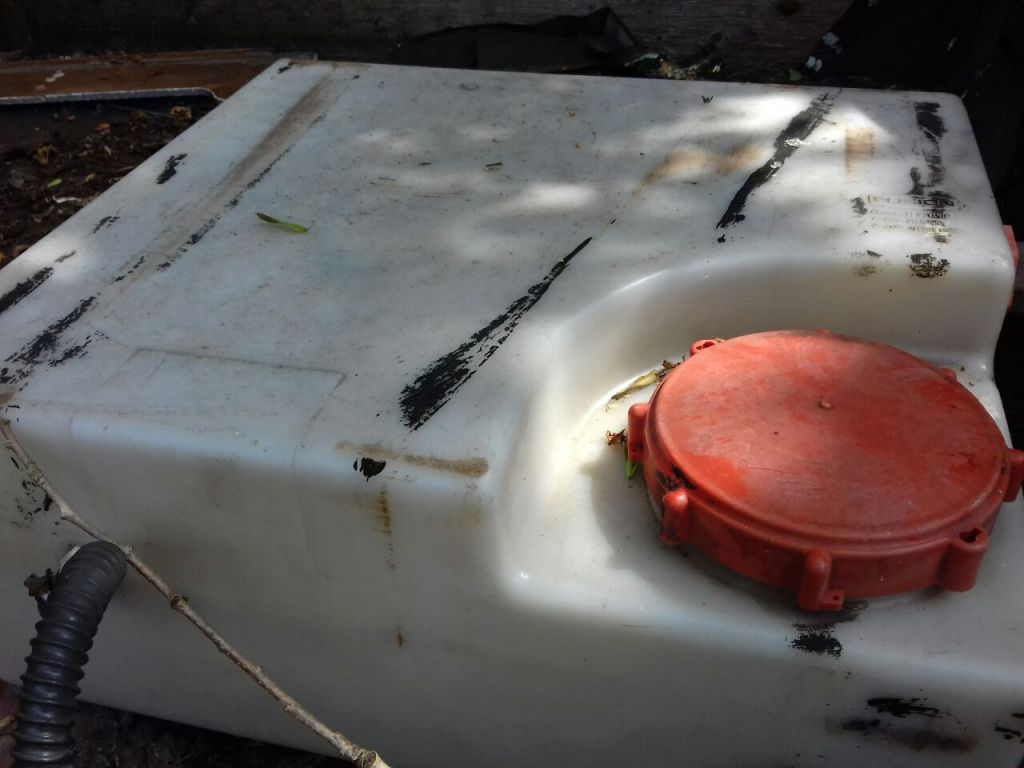
On this page:
How to ensure the water tank is uncontaminated and squeaky-clean, the freshwater tank refill, filtering and sterilizing the incoming water, related questions.
Sanitizing your fresh water tank will greatly help in removing the strange odor and bad taste of the water onboard. It will greatly reduce the occurrence of coliform bacteria and will ensure the health of everyone onboard.
Fortunately, keeping the water tank in a better condition to provide good-tasting and drinkable water is very easy.
To start with , check if there’s detritus accumulation on the tank. You can do this from the equipped with inspection and cleaning ports on the tank.
To check , put on a sanitary glove and swab inside the tank with your finger. If it’s slimy or emits an odor, your tanks should be cleaned with detergent and sanitized.
If you haven’t cleaned your water tanks properly in a long time, you might find a thick even stubborn crud layer in the bottom.
Even though removing the tank out of the boat and steam-clean it works great, many of the times it’s not practical. For tough cases though, you should probably steam clean them.
Otherwise, you can use the following steps:
- Empty all the water in the tank
- Add a few inches of ice cubes in the tank
- Add a small amount of water for the cubes to slide the bottom of the tank
- Take the boat in a place with wave action for the cubes to slosh on the bottom of the tank. - The cubes will scrub the bottom as they melt
- Remove the water filters to avoid the clogging and then flash the tank until everything is clear
- Make sure you flush with clean water to avoid sanitizing again later
What to Use to Clean Water Tanks?
- For the first rinse, steam cleaning is the most effective way. If your tank is in bad shape, steam cleaning is the way to go.
- If you don't have a steam cleaner, use a pressure washer instead.
- For steel and aluminum tanks , you can use bleach to flush the system.
- For plastic tanks , you can use vinegar or lemon.
- You can also get a special Water Tank Flush, which works well, but is more expensive.
This last one works surprisingly well. The organic acids will dissolve any debris. Vinegar, however, won't leave any odors.
Some tips on using bleach
Plastic tanks may retain chlorine flavor, so I'd recommend trying to use vinegar before trying anything else. Also, if you're using bleach, I would disconnect all the outlets. If it gets into your lines, your water will taste like chlorine for a while. It doesn't hurt, but it doesn't taste nice either.
After cleaning the tank from the buildup, it’s time for sanitizing the water system: “System” because it does no good to clean the tank and leave the pump, lines, and others.
You can sanitize the system by adding home bleach 1 teaspoon per gallon or precisely 8 ounces per 10 gallons of the water in the tank.
CAUTION : This bleach is to sanitize the system, it’s not fit for drinking!
Pressurize the water with the system open but turn off the end outlets. Let it sit for 24 hours;
After that flash the water with each outlet starting with the furthest from the pump. Do this with all the outlet and repeat the flush until all the bleach smell is gone.
Warning : for Aluminum tanks, you should not sit the bleach for more than 24 hours. Also, you should not repeat this process for more than twice a year.
At this point, the system is clean and sanitized. It’s now time to fill the water tank with fresh water from different sources; you can get from outside sources or use the onboard water maker to refill the tank (water from the onboard maker is often sterile and pure).
If the water is coming from outside source however you must take extra caution. For starters, make sure the fill cap is in good condition to avoid water leaks into the tank with contaminants. It makes no sense to clean the tank and put in contaminated water from outside.
Ensure the hose pipe that you are using to fill in your tank is FDA rated to use for potable water. Also, before you put it directly into your tank, let the water run first to flush the hose. Understand: a hose with water in the sun can be a home to many living organisms.
Note: A better solution is to have your own horse which you flush after use and store safely.
Also running water will help you to know the condition of the water from the source. If the water looks dirty, don’t fill in your tank with it. It might be contaminated with things like cyst, bacteria or even metals, there is no need to take chances.
Tip: the key to having clean water onboard is usage. Keep the water flowing in and out of the system regularly to reduce the chance of it becoming stale.
IF you are getting water from an outside source that you are unsure of its safety, you must take extra caution to make sure you are getting quality and clean water. You can guarantee this if you use sterilizers and filters.
When buying a water filter, make sure that it has met all the Microbiological Purification Standards. With this, you can eliminate all the cysts, viruses and bacteria from the water.
Alternatively, go for an Ultraviolet Sterilizers. With this, the water is sterilized by UV lamp that produces UV radiation to kill bacteria.
In addition, add a filter to remove other contaminants.
Chemical water treatment
A good alternative to treat the onboard fresh water in the tanks is by use of chemical products. There are different varieties you can find out there although you be cautious to read on the label because different products have different usage. You might find some that just remove the smell and taste of the water while other sterilizes the water to make it bacteria free.
Often, Iodine and Chlorine based products are better solutions to make questionable water safe to use. If this is not available, use home bleach; ½ teaspoon for 5 gallons and let it sit for 30-60 minute and it will be good to drink.
Checking if the water is safe for use
The best way to determine if the water in the tank is safe for use is to have it tested. Visit a local lab. if you don’t know any visit your local health department and they will direct you.
This method though is only valid only for the water in the tank. Alternatively, purchase a self-testing kit, which although they are not as accurate they can indicate if there is a problem with the water.
How to empty holding the tank on the boat? There are two ways that you can empty the holding tank; one, go at least three miles offshore and empty the tank there or go to a fuel dock with a Marine Sanitation Device (MSD) and a waste pump to empty it for you.
How to install a freshwater tank on a boat? The freshwater tank should be installed close to the middle of the boat. Have a small water pump and enough hose. Get the measurement where the hose should run and fit it. Add a T connection to the pickup line on the pump and run one hose into the tank and the other outside of the boat. Next cut the drainage outlet, place the tank to the selected location and fix everything tight and the tank is ready for use.
How to prime a fresh water pump on a boat? To prime water pump on your boat, start by ensuring there is enough water in your tank then checking the filters and screens to make sure they are working alright. Next opening an outlet like the facet to let the air out and it will prime.
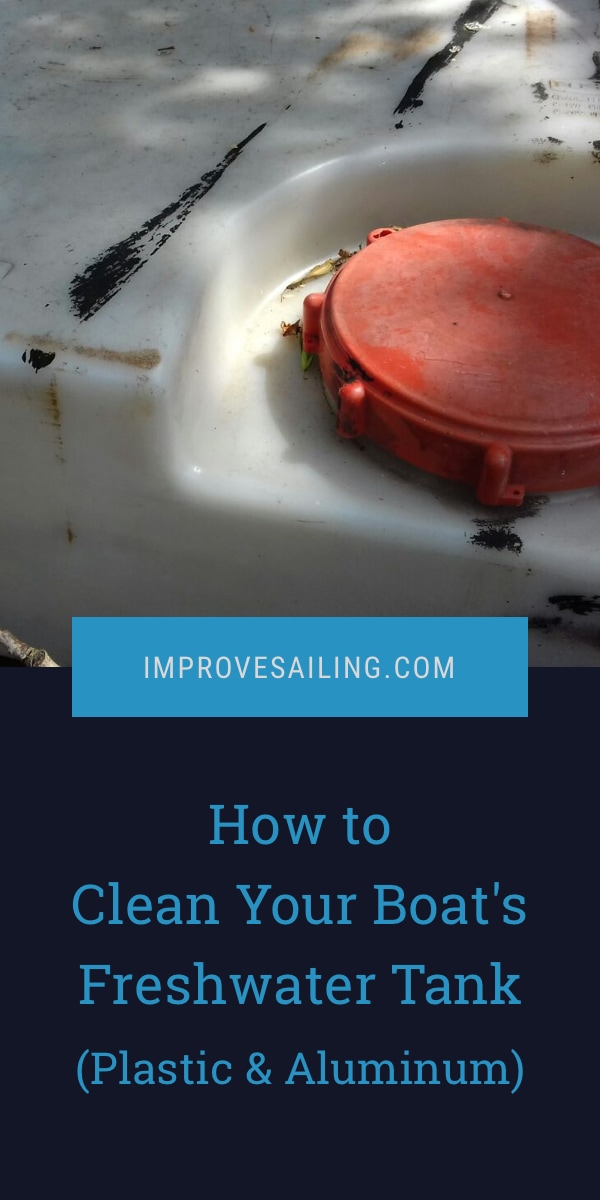
John Robbins
One teaspoon in 1/6 of an ounce. One teaspoon per gallon is 1.67 ounces for 10 gallons, not 8 ounces! That is way too much bleach.
Elina Brooks
Thank you for letting us know that steam cleaning is the most effective way to clean a fuel tank, especially if it’s in a bad shape. My dad owns a fishing boat, and he was thinking of getting a new fuel tank for it soon. I’ll be sure to tell him about this before he gets a custom order for his aluminum fuel tank soon. https://www.mycarrenterprise.com/boat-fuel-tank
Leave a comment
- New Sailboats
- Sailboats 21-30ft
- Sailboats 31-35ft
- Sailboats 36-40ft
- Sailboats Over 40ft
- Sailboats Under 21feet
- used_sailboats
- Apps and Computer Programs
- Communications
- Fishfinders
- Handheld Electronics
- Plotters MFDS Rradar
- Wind, Speed & Depth Instruments
- Anchoring Mooring
- Running Rigging
- Sails Canvas
- Standing Rigging
- Diesel Engines
- Off Grid Energy
- Cleaning Waxing
- DIY Projects
- Repair, Tools & Materials
- Spare Parts
- Tools & Gadgets
- Cabin Comfort
- Ventilation
- Footwear Apparel
- Foul Weather Gear
- Mailport & PS Advisor
- Inside Practical Sailor Blog
- Activate My Web Access
- Reset Password
- Customer Service

- Free Newsletter

Dufour 44 Used Boat Review
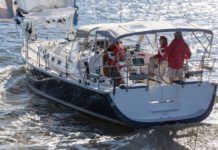
Blue Jacket 40 Used Boat Review

Catalina 270 vs. The Beneteau First 265 Used Boat Match-Up

Ericson 41 Used Boat Review

How to Create a Bullet-Proof VHF/SSB Backup

Tips From A First “Sail” on the ICW

Tillerpilot Tips and Safety Cautions

Best Crimpers and Strippers for Fixing Marine Electrical Connectors
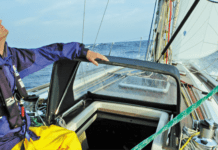
Solving the Dodger Dilemma


Polyester vs. Nylon Rode

Getting the Most Out of Older Sails

How (Not) to Tie Your Boat to a Dock

Fuel Lift Pump: Easy DIY Diesel Fuel System Diagnostic and Repair

Ensuring Safe Shorepower

Sinking? Check Your Stuffing Box
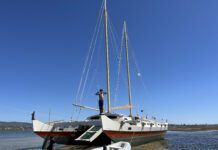
Why Choose the Wharram Design?
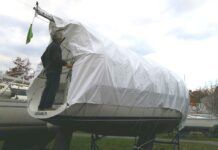
Winterizing: Make It Easy With Checklists

Boat Improvements for the Technically Illiterate

What Do You Do With Old Fiberglass Boats?

Stopping Holding-tank Odors

Giving Bugs the Big Goodbye

Galley Gadgets for the Cruising Sailor

The Rain Catcher’s Guide

Sailing Gear for Kids

What’s the Best Sunscreen?

UV Clothing: Is It Worth the Hype?

Preparing Yourself for Solo Sailing

R. Tucker Thompson Tall Ship Youth Voyage

On Watch: This 60-Year-Old Hinckley Pilot 35 is Also a Working…

On Watch: America’s Cup

On Watch: All Eyes on Europe Sail Racing

Dear Readers
- Systems & Propulsion
Keeping Water Clean and Fresh
Good old bleach is great, but treatment tabs have advantages.

Beyond protecting the tank with basic filtration and securing the tank vent, you also need to take further action to ensure water quality, as the tank and its contents will always be far from sterile.
Municipal water is filtered to remove turbidity, disinfected (typically with chlorine, ozone or ultraviolet light), filtered once more (often very fine filtration to remove cryptosporidium cysts, which resist disinfection), and disinfected once more (with chlorine or chloramine) to protect the water while its in the distribution system. However, since we are storing the water on our boats, this process of secondary disinfection becomes our responsibility. So what are the options for treating water that is already in an onboard tank?
In the U.S., the chlorine residual from municipal waters secondary disinfection is usually enough to keep tank water clean. In most cases, a sufficient amount of chlorine—1 part per million (ppm)—from the municipal treatment process carries into the boats tank. You can easily check the amount of chlorine in your tank by using the test strips designed for aquariums. We like the Tetra EasyStrips (about 69 cents per test), which simultaneously test for nitrate, nitrite, hardness, chlorine, alkalinity, and pH.
Over-chlorinating, whether with bleach or commercial freshening chemicals, can shorten the life of elastomers in your plumbing. Chlorine is a leading cause of death for freshwater pump impellers. Excess chlorine also shortens the life of tap-water polishing filters. Finally, excess chlorine has negative health effects and is limited to 4 ppm by U.S. drinking water standards (0.5-1 ppm is normal). If you find that your tank lacks any residual chlorine, there are a few treatment options:
Bleach: Household bleach (unscented) typically contains 5.25 percent sodium hypochlorite, which breaks down in water into hypochlorous acid and several other useful sterilizing agents. Only a few parts per million are needed to effectively deactivate bacteria and viruses, typically within two to 30 minutes, depending on temperature and contaminant levels. However, there are a few caveats. The water must be reasonably free of physical dirt, since the bleach will expend itself oxidizing organic materials and bacteria will hide within the dirt.
How much bleach should you use? More is not always better. The standard recommendation for emergency disinfection is 1 tablespoon per 10 gallons; this standard is frequently repeated in boating and camping texts. This allows for organic compounds chlorine demand and provides enough kick-20 ppm of free chlorine-to reach micro-organisms buried inside small dirt particles. This is appropriate for sanitizing and for dirty water, but it is overkill for routine treatment of good quality water, at least 10 times more than is typically used in tap water.
For treating water that is clear and chlorinated at the tap, 1 teaspoon of bleach per 50 gallons will provide a 2 ppm booster, the very most that should be needed. Chlorine aftertaste is the most common onboard water-quality complaint; however, chlorine at the tank can be efficiently removed with carbon filtration. In fact, chlorination is vital to performance of downstream filtration, controlling growth within the filter.
Dichlorisocyanurinate: Common in swimming pool tablets, chlorine in this form has several advantages. Chlorine levels are stabilized by a chemical equilibrium, resulting in a more stable and more durable treatment, and reducing the amount required. Additionally, the released chlorine generates cyanuric acid, an effective corrosion inhibitor for aluminum, reducing aluminum corrosion by 10 to 40 times compared to bleach treatment. Both the U.S. Environmental Protection Agency (EPA) and World Health Organization (WHO) approve this method.
Hydrogen peroxide: Internet forums frequently suggest the use of hydrogen peroxide (H2O2) as a bleach alternative, but because of the lack of regulatory guidance (neither the EPA nor WHO recommend it as a treatment solely on its own) and numerous well-known shortcomings, we cannot recommend it as a sterilizing agent.
Quaternary amines: Common in non-bleach, anti-bacterial surface cleaners and hand soaps, quaternary amines (e.g. benzalkonium chloride) are effective against bacteria, algae, and most viruses. However, they are typically very toxic to marine invertebrates (a few ppb is lethal), so use around the water should be limited. If you are sterilizing a tank with these, they should be flushed from the system before drinking.
Ultraviolet light (UV): Ultraviolet light, specifically those wavelengths between 250 and 300 nanometers, is a very effective sterilizing agent. UV is typically employed as a final sterilizing step, in the plumbing, and not in the tank. We’ve tested two portable UV devices for personal water purification, the Steripen and the CamelBak All Clear .
Desert island tip: Lets say you’re down to your last bottle of water, and although you have fresh water available, you have no chemicals or filters to make it safe to drink. What to do? WHO has studied this problem, as it is not unusual in the wake of a hurricane or flood.
First, collect the best water you can find in clear water bottles, allow the water to settle, and filter it through cloth until it is reasonably clear. Fill the bottles about three-quarters full, shaking vigorously to oxygenate the water, and then, leave the water in full sun (placing the bottles on a reflective surface helps) for three to eight hours. The suns UV will deactivate over 99.9 percent of the pathogens in the bottle.
None of the above methods will remove microscopic parasites (giardia and cryptosporidium). These are shell-like organisms that resist chlorine treatment; water suspected of containing parasitic cysts must be filtered to 0.5 microns to provide physical removal. We will deal with physical filtering at the tap in the final segment of this series.
What We Tested
There are commercial products designed to accomplish the same water-purifying tasks as bleach, but they claim they do it better. For this report, we tested tank-cleaning products, sanitizing chemicals, and tank-freshening chemicals, as well as a dishwasher detergent.
Intended to cleanse funky tanks before sanitizing, tank-cleaning products contain non-bleach cleaners and sanitizing agents. While they should not be needed in a well-maintained system, they may be helpful if things have been let go.
Sanitizing chemicals are for used after cleaning; all are based on chlorine, but the chemistry varies. Tank-freshening chemicals provide disinfection for clean tanks, supplementing the chlorine in the tap water. These are handy when you don’t trust the tap water-perhaps the water has been sitting for a while and seems less than fresh.
How We Tested
We dosed each freshening product into reverse osmosis (RO) water as directed by the manufacturer, measuring free chlorine and observing odor. We then transferred the water into 1-gallon, disposable ice-tea jugs made of thick-walled polyethylene, which we felt presented a reasonable surrogate for a lightly contaminated polyethylene water tank. Although well-rinsed when emptied, they had a uniform level of taste and smell saturated into the plastic; we graded how well the chlorine residual endured after 24 hours, and how well residual odor and taste were removed.
We then repeated similar tests for tank cleaning-chemicals and tank-sanitizing chemicals. We also placed aluminum corrosion coupons (SAE 329) in the solutions and graded them after regular checks during a three-week period; chlorine-induced corrosion is a major concern for those with aluminum tanks. Note that all testing was with high-quality RO water; other water types may exhibit some chlorine demand (some bleach is neutralized by the water), and some will contain chlorine. The only way to be certain of dosage is to test with swimming pool strips or equivalent.
We tested tank-cleaning products by soaking contaminated beverage containers and soaking dishes uniformly soiled with dried-on salsa. Water and a bleach solution recommended for sanitizing by the American National Standards Institute (ANSI) were controls.
We also used each of the freshening chemicals during a summer of cruising, dosed as recommended. Because the filling water was variable, we did not attempt any quantitative measurement in the actual onboard field trials. We simply evaluated taste.
Observations
Here is a rundown of some important observations that testers made during the evaluation.
Any additives should be used during the first one-third of the filling process. This allows a thorough mixing. All of the tablets dissolved before the tank was full. For aluminum tanks, dissolve the tablets in a bottle of water first.
Bleach is a handling problem. We settled on a sturdy pint sports drink bottle with a cap that held the required amount. We kept the bottle in a deck locker to avoid dribbling the bleach on clothing, upholstery, or carpet. For annual sanitizing we filled a water bottle with the required dose at home and took only that to the marina. Camco TastePure Freshener contains diluted bleach and is less of a bleaching hazard if spilled. All other products were non-bleaching; nevertheless we would still clean up all spills and keep them away from fabric.
While some of the products left a detectable chlorine smell in the tank, none were noticeable at the tap, even without carbon filtration.
We were concerned about pitting in aluminum tanks. The highest concentrations were in the tank cleaning and sanitation products. Since these are only used once a year for no more than 90 minutes while the tank is being cleaned and flushed, we limited the test coupon exposure to only 48 hours. None of the products caused significant pitting, but Puriclean (dichlorisocyanurinate) was clearly less corrosive to aluminum than other sanitizing treatments. When we tested freshening treatments and tap water, we found the same trend; AquaMega Tabs (also based on dichlorisocyanurinate) were far less damaging than other treatments, and less damaging than tap water alone.
While most disinfecting products are based around 2 to 3 ppm of free chlorine, 0.5 ppm residual chlorine is enough for safe water, and owners of aluminum tanks should buy test tapes and use only the minimum amount of disinfectant required.
We tested some non-chlorine treatments (ozone and hydrogen peroxide), but found these to be either corrosive to aluminum or ineffective. Carefully regulated chlorination is the most sensible treatment.
Tank cleaning chemicals function a little differently than bleach and detergent, dissolving more material without agitation, but not loosening heavier deposits as well as detergent with light agitation. They did perform better than plain water or the ANSI bleach sanitizing solution. All were non-corrosive to aluminum. The sanitizing effect of the quaternary amines and peroxides may be valuable, if the user does not intend to follow cleaning with a bleach sanitizing process.

Tank Cleaning Chemicals
Star brite tank cleaner.
Star brite’s Water Tank and System Flush, also labeled as AQUA™ Water Tank & System Flush, is based on alcohol and alkylbenzly chloride, a quaternary amine commonly used in anti-bacterial hand soaps and surface cleaners. It is more potent than plain bleach sanitizing solutions. However, we cannot confirm the effectiveness of this chemistry.
We do not advise adding bleach to the product, as an undesirable reaction will occur. Any bleach sanitizing, if desired, must be a separate step.
Bottom line: Recommended with a bleach follow up if fail-safe sanitizing is required.
Camco Spring Fresh
Camco’s TastePURE Spring Fresh Fresh Water System Cleaner and Deodorizer contains a food-grade surfactant and is a better cleaner than plain bleach sanitizing. As with the Star brite, we caution against adding bleach to the product as a bad reaction will occur. If you plan to do bleach sanitizing, do it in a separate step.
Bottom line: Recommended if fail-safe sanitizing is required. Follow up with bleach or Camco Dewinterizer.
Finish PowerBall Tabs
Our research into the chemistry behind tank-sterilizing tabs led us to regular dishwashing tablets. Finish Powerball Tabs were the ones we had on hand, so we included them in the test. They required slightly more agitation than the other test products, but they did a superior job when gentle swirling was added. Like all dishwasher detergents, Powerball Tabs contain a sterilizing agent (in this case, percarbonate, which releases hydrogen peroxide) to prevent the dishwasher from getting nasty. We used 1 tablet per 5 gallons of water, which we felt mimicked the solution used in a dishwasher.
Bottom line: This is the budget buy choice, if you have the time to take your boat for a rollicking sail to provide some agitation.
Tank Sanitizing Chemicals
These treatments are meant to be done once a season (often after winter storage) or when you suspect a contaminated tank.
Clean Tabs Puriclean

These tabs are based upon sodium dichlorisocyanurinate, and have the same basic chemistry as AquaMega Tabs (below), but are packaged in a tub suitable for tanks up to 60 gallons. To uses, you dissolve the tabs in about gallon of water, then mix it into the tank and allow it to sit for one to two hours. This concentration (about 20-30 ppm chlorine) sanitizes any pre-cleaned tank. Testers noted much lower aluminum corrosion rates than other sanitizing products; the aluminum is discolored by the formation of a dark passive layer, which stops further corrosion and pitting.
Bottom line: Recommended. The stable residual and low aluminum corrosion rates make Clean Tabs Puriclean the PS Best Choice among tank sanitizing chemicals.
Star brite Aqua Water Shock
A concentrated formula, Star brite’s Aqua Water Shock is intended to clear up any odors and tastes that tank cleaning leaves behind, and to sanitize the tank. It is also recommended for routine freshening at a lower dosage.
Bottom line: We don’t believe this outperforms the ANSI bleach sanitizing procedure (below).
Camco Dewinterizer
Camco’s Dewinterizer uses a somewhat lower chlorine content than recommended by ANSI. It is intended to clear-up odors and tastes that tank cleaning left behind, and to sanitize the tank.
Bottom line: We don’t believe this outperforms the ANSI bleach sanitizing procedure.
Tank Freshening, Disinfection Chemicals
These treatments are meant to be done on a routine basis, either to restore freshness to stale water or to maintain clean tanks.
Household Bleach
Unscented, 5.25-percent sodium hypochlorite (household bleach) is sold under countless brands. The baseline for comparison, WHO and the EPA has studied this ad nauseam. A solution of 1 teaspoon per 50 gallons gave us a 2 ppm residual; about right for most tap-water applications. Remember that bleach loses effectiveness after long storage and should not be kept more than six months after opening.
Bottom line: This is far and away the most affordable treatment, but you must measure it yourself-and don’t spill.
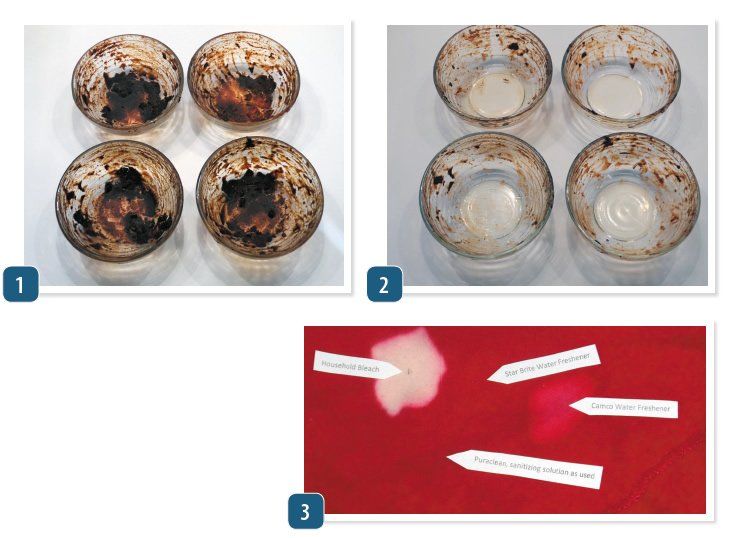
Clean Tabs Aqua Mega Tabs
Based on sodium dichlorisocyanurinate, the Aqua Mega tablets are available in amounts matched to tank sizes. We observed a more stable residual and much lower aluminum corrosion rates. There was a stable residual for weeks, versus only 48 hours with bleach products. Because of this stable residual, we suspect that the Aqua Mega tabs dose might be stronger than what most tanks will require for simple freshening.

If you are willing to test your water, you can tailor a smaller dose that more closely mimics the ANSI solution. If the 50-gallon size is more than you need, you can break tabs in half and wrap-up the remainder in the foil pouch for up to one month. Its also available in small pills ( Aqua Minitabs ) for individual treatments.
Bottom line: The convenient packaging, low corrosion rates and stable residual made this our Best Choice among tank freshening and disinfection chemicals. It was also our favorite to use.
Star brite Freshener
The Star brite Water Freshener was the only solution in the test lacking the distinctive chlorine odor, but it did not change the odor of our chlorinated tap water. The manufacturer did not share the disinfectant chemistry, so we could not confirm its effectiveness.
Bottom line: While the lack of chlorine smell in the concentrate suggested better tasting water, we observed no difference on the boat.
TastePure Freshener
Based on pre-diluted bleach, TastePure Water Freshener performed much like bleach. The resulting water had a barely discernible chlorine smell, and the taste was fresh.
Bottom line: Recommended as an effective freshening product.
Conclusions
The United States has perhaps the highest quality water in world, regardless of what we read in the papers. Do we need to disinfect if the source water is chlorinated and of high quality? Perhaps not for safety alone, if the tank is cleaned and the water is turned over every few weeks, though often potability is improved. If traveling outside the U.S. or if cautious by nature, providing secondary disinfection is easy and safe.
We like bleach, particularly for annual sanitizing. Its cheap, its known to be effective, and any aftertaste is easily removed with carbon filtering. However, the two test products formulated with dichlorisocyanurinate—Aqua Mega Tabs for freshening and Puriclean Powder for sanitizing—lasted longer than bleach. We also like Aqua Mega tablets for convenience; they have a long shelf life and are simple to use, with nothing to measure, nothing to spill and nothing to return to stowage after use. If your boat is not in the water and you can’t agitate your tank, the cleaning chemicals seem to help loosen deposits better than bleach sanitizing solutions and dishwasher detergents. However, dishwasher detergent did very well when a little sloshing was provided.
Although we began this project expecting cheap and effective bleach would win out, the convenience of some of the commercial products won us over.
For sailors with aluminum tanks, we recommend Aqua Mega Tabs and Puriclean because of much lower corrosion rates—even lower than tap water. Additionally, we believe that the manufacturer’s recommended dose may be quite conservative; half this amount may be sufficient. We recommend that you buy test strips and use the smallest dose that is detectable or produces any chlorine smell in the tank. Aluminum corrosion will be reduced.
Point-of-use filters will remove any last trace of odor, taste, or contaminating chemicals, leaving water as fresh, pure, and safe as bottled water. The steps we explored in this and the water tank filter report are just as critical as that final filtration step. Protection against biological growth begins at the tank fill and the tank.

- Preventing and Treating the Tainted Tank
RELATED ARTICLES MORE FROM AUTHOR
27 comments.
Excellent article(s), all 3 of them. I learned a lot. Biggest frustration is sourcing the Best Choice Aqua Mega Tabs. They are not available in the US. I can’t imagine why more marine supply stores don’t offer them.
Stephen, I purchased Aqua Mega Tabs from http://www.TheYachtRigger.com out of Florida.
I seem to be having trouble finding the Aqua Mega Tabs in the US and even in England it seems to be hard to come by and with shipping it will be too expensive. Is there any US source with stock of this product? I tried to leave a message on the www site for Aqua Mega and it did not seem to work. thanks Kent
Try Amazon or Hopkins-Carter (Aqua Mega Tabs).
My mother would like to keep her water clean and free from contamination, which is why she’s thinking of installing a system that will help keep it clean. Well, I also agree with you that it would be smarter to use chlorine too. Thank you for clarifying here as well the importance of sterilizing.
My marina on West River, in Maryland, uses well water. Assuming the well water passes the county or state requirements for potability, how, if at all, does this fact change your recommendation about the amount of bleach to use, i.e., 1 tsp per 50 gal water, where water is clear and chlorinated at tap?
I’m not far from the West River, just 10 miles down the Chesapeake Bay, in Deale, MD. My marina is also on well water, and I’m guessing the well water is similar. Often it goes a little skunky over time, as the sulfate in the well water is converted to sulfide by native bacteria.
The above advice on chlorination assumes potable quality water that is not chlorinated, and is based on EPA, WHO, and ANSI guidance, and on personal experience and testing. It should apply to your well water. For those that use chlorinated tap water, as long as you rinse the hose out well before use, chlorination of the boat’s tank is not required.
My Beneteau Oceanis (2002) manual section on the fresh water system recommends “When the system has not been used for a long period of time, the tanks and pipes should be cleansed with an acetic acid solution (white vinegar).” But I find no mention of acetic acid here. What are your thoughts about this? Thanks Arthur
Excellent question (cleaning plumbing with vinegar) and excellent topic. Unfortunately the manual gives no information beyond this: “When the system has not been used for a long period of time, the tanks and pipes should be cleansed with an acetic acid solution (white vinegar).” I will be digging into this more deeply.
First, avoid contamination of the lines by “pickling” them with polypropylene glycol winterizing chemical, even in warm climates. So long as the solution is greater than 25% glycol there will be no growth. If you skimp on the agent or there is water in the pipes when you start and you use the typical -40F burst point antifreeze, the bugs will use it as food and grow a nice thick film, which is not dangerous itself, but tastes nasty and makes it impossible for chlorine to work properly through the season. The hot water tank and freshwater tanks should be stored empty and dry.
Bleach is the standard and recognized method for sanitizing relatively clean systems. But if there is a substantial film, there can be advantages to soaking with an acid to eat away the film. Vinegar will work, but the literature and PS testing agree that citric acid (Amazon or the grocery store) is 3-5 times more effective both for removing the film and deactivating chlorine resistant bugs, such as gardia. For every descaling, cleaning, and sanitizing use, citric acid is the more effective, less expensive choice. Vinegar is suggested simply because everyone has it in the shelf.
We’re going to follow-up on this topic, since freshwater systems can get nasty.
Hi Drew I appreciate your quick and informative reply, and look forward to studying your follow-up on cleaning fresh water systems with acid.
Good article. We do something different. We have one tank with a 125gal capacity and we do fresh water cooling of both our refrigeration and freezer from this tank. We run the cooling return line through a canister filter using a charcoal filter. Yes that takes the chlorine out of the water. But we also use tank water through another charcoal filter to flush our water maker, so we don’t have to do the capture RO water and use that for flushing. When in the US we use dock water, but we always run the hose for a good bit to clear bacteria in the hose and I suspect the choline in the municipal water help keeps the tank good since we live aboard and fill about every two weeks.
We did a near circumnavigation of 10 years and 35K miles and when we take water off a third world dock we have a triple filter we use. The first filter is 20 micron, the second inline filter is 5 micron and the last inline filter is a half micro filter with a polarized agent that will remove viruses. We hook the hose up to one end of the filter and the other end of the series goes in the tank. Of course we test water before using it to find out the ppm of the ions. If it is over 750ppm we try to do something different.
While we have a water maker, there are some places where you are at a dock, but you would not dare pull the harbor water into your water maker, so the three stage filter works well. Otherwise it is time for day trip to find clean salt water and run the water maker.
Some watermakers use fresh water from the water tank to flush membranes. Did you find that these products damage watermaker membranes?
You do NOT want hypochorite- or chlorine-containing chemicals in the flush water tank. There is a carbon pre-filter to remove the chlorine, but I’d tend to play it safe. A common recommendation is to scrub the tank as practical, shock chlorinate (not a lot–generally a few tablespoons of bleach) the tank at the start of the season, then rinse vigorously and call it good for the year. You will still get a trace of chlorine with city water (about 1 ppm) but the filter can deal with that.
Some watermakers use fresh water from the water tank to flush membranes. Are these products safe for watermaker membranes?
Plain household bleach is becoming harder to discern. Between many options, scented, low foaming, disinfecting etc even just plain bleach is hard to identify on a store shelf with all the advertising hype.
I noticed that sodium dichloroisocyanurate found in Aqua Mega tabs was recommended, but are difficult to find in the US. I wanted to make you aware of a newly available product, Aquatabs-Marine, which uses the same disinfectant compound and is now widely available in the US at http://www.AquamarineWaterSolutions.com . One tablet treats 4 gallons at about 1.2 ppm, so it can be removed by the active carbon filter on the freshwater flush of most watermakers. This is a drinking water quality tablet that is EPA registered, NSF certified and recognized by the WHO as a routine household drinking water disinfectant. I’d be interested to hear your thoughts.
Thank you for this link. I’ve been adding sodium dichloroisocyanurate tablets to my water tank for years, but until now, only the small tabs sufficient to treat ~2 liters were available in the U.S. In the past I resorted to buying the larger tabs from “gray market” sources on ebay and amazon
Good series but mostly applicable to those without a water maker . While tank purification remained one of our concerns, we tap danced around the issue. We developed a simple plan which was to make all our drinking water directly into a couple of dedicated Jerry jugs. The rest of the water used for cooking and ablution was directed into the vessels tankage. For drinking water only, we kept a couple of one litre plastic jugs in the fridge topped up from the two dedicated Jerry jugs. Never had a water purification issue. Most of the time, our water maker product has was about 200 to 250 ppm. Hugh
This is the most thorough boat water treatise I’ve seen yet. Thanks all. Long shelf life bleach is less effective. Get it as fresh as possible. For clear water I use two drops chlorine per gallon, with a contact time of 48 hours before drinking. For immediate consumption I use eight drops per gallon (of un-chlorinated water), which will make me queasy. To get rid of chlorine taste, I use three cap fulls of hydrogen peroxide per gallon of water, and that will kill the chlorine taste. It also de-activates the chlorine. So, for chlorinated water that tastes bad to me, I add hydrogen peroxide to my glass of water a couple minutes before drinking. Peroxide can be added to the tank with equal results, but the chlorine will be de-activated, thereby defeating its purpose. Hydrogen peroxide by itself is basically useless for sanitizing water.
Personally, I won’t drink anything from a tank until I treat it in my glass or bottle. We typically treat a few gallons at a time and put it in containers in the kitchen for people to drink from. Either that or load up with bottled water (wasteful). No one ever got queasy from this technique, and the peroxide imparts a pleasant sweet taste to the water. Maybe a chemist can explain why this does/doesn’t work. Notwithstanding, I’ve been doing water this way for thirty years and no two-step. Cheap and easy.
Hydrogen peroxide can certainly be used to dechlorinate water (it oxidizes the chlorine to chloride–about 0.4 pounds of H2O2 per pound of chlorine is required); this is a common commercial scale method. However, proper sanitation demands that a chlorine residual is maintained in the tank and throughout the plumbing, if only 1 ppm. Subsequent treatment with carbon is VERY effective at removing the chlorine residual. Carbon removes organic materials by adsorbing them on the surface of microscopic pores. It removes chlorine differently, by sacrificial oxidation of the carbon itself, and as a result it can remove a LOT more chlorine, far more efficiently, than removing odors and tastes without chlorination, by adsorption alone.
We do not recommend dechlorination in the tanks by any chemistry. You want a chlorine residual. Remove the chlorine with carbon. We like carbon block filters, because they also remove cysts, an economical and practical two-for-one.
Thank you Drew. I left out something important that we do with water. Sometimes we rent, sometimes we fly our own boat. Anymore, we carry two Steri-pens when we leave municipal water behind. You mention this product above. Ashore in foreign lands we never allow ice in a glass of water, and we don’t eat salads. Rent boat water tanks are sometimes pretty bad smelling, leaving me to wonder what’s in there. Here’s a link to Steri-pens: https://www.katadyngroup.com/us/en/ado-mp-efg-steripen-adventure-opti-uv-water-purifier~p6693 . They run about $70. Not cheap, but it beats the alternative. This was a great article and bears re-posting from time to time.
I just came across this article (March 2023). Unfortunately, like a few others have commented on since 2021, the items that were specifically recommended for aluminum tanks are not available in the US. The Aqua Mega Tabs are not available via Amazon or Hopkins-Carter, nor is the PuraClean for sanitization. There is a product called AquaTabs with same ingredient, but the pills only treat 4 gal vs. the 50 gal, and the price makes it much less cost-effective.
If PS is going to redistribute these articles year after year, it would be great to have them updated for us US subscribers.
Regarding Cleantabs / Aqua Mega Tabs products that are mentioned in this article, please stay tuned for some exciting news around their availability in the US and Canada. The tests are very relevant to US boaters and the availability issue is being addressed.
We are bringing Clean Tabs to North America – Aqua Mega Tabs, Aqua Midi Tabs, Puriclean etc. We hope to start shipping over the next 3-4 months. If you’d like to be kept informed of availability, please sign up for notifications at cleantabs.com
“In the first part of our three-part series covering onboard water quality, we discussed protecting the tank with basic filtration and securing the tank vent.”
Can you link the referenced first part? I can’t find it.
Thanks, -Bruce
https://www.practical-sailor.com/systems-propulsion/filters-for-water-tank-vents https://www.practical-sailor.com/waypoints-tips/onboard-water-treatment/decontaminating-a-tainted-tank
Thanks so much, @Drew. This is what I was looking for.
LEAVE A REPLY Cancel reply
Log in to leave a comment
Latest Videos
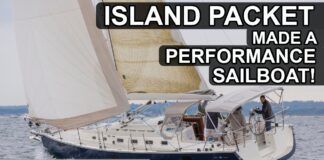
The Performance Sailboat from Island Packet: Blue Jacket 40 Boat Review

Top 3 Winter Boat HACKS!

Cabo Rico 34 Boat Review

Super Shallow Draft Sailboat: The Leeboard Sharpie
Latest sailboat review.
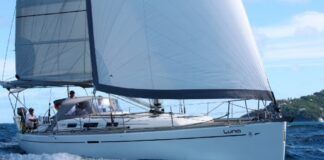
- Privacy Policy
- Do Not Sell My Personal Information
- Online Account Activation
- Privacy Manager
ACTIVE STORM TRACKER Hurricane and Tropical Storm Information Learn more

Service Locator
- Angler Endorsement
- Boat Towing Coverage
- Mechanical Breakdown
- Insurance Requirements in Mexico
- Agreed Hull Value
- Actual Cash Value
- Liability Only
- Insurance Payment Options
- Claims Information
- Towing Service Agreement
- Membership Plans
- Boat Show Tickets
- BoatUS Boats For Sale
- Membership Payment Options
- Consumer Affairs
- Boat Documentation Requirements
- Installation Instructions
- Shipping & Handling Information
- Contact Boat Lettering
- End User Agreement
- Frequently Asked Questions
- Vessel Documentation
- BoatUS Foundation
- Government Affairs
- Powercruisers
- Buying & Selling Advice
- Maintenance
- Tow Vehicles
- Make & Create
- Makeovers & Refitting
- Accessories
- Electronics
- Skills, Tips, Tools
- Spring Preparation
- Winterization
- Boaters’ Rights
- Environment & Clean Water
- Boat Safety
- Navigational Hazards
- Personal Safety
- Batteries & Onboard Power
- Motors, Engines, Propulsion
- Books & Movies
- Cockpit Confessions
- Communication & Etiquette
- Contests & Sweepstakes
- Colleges & Tech Schools
- Food, Drink, Entertainment
- New To Boating
- Travel & Destinations
- Watersports
- Anchors & Anchoring
- Boat Handling
The Care And Feeding Of Your Boat's Water Systems
Advertisement
Boating is all about water, inside and outside your boat. Let's take a close look at important maintenance tasks to stay on top of all your water systems.
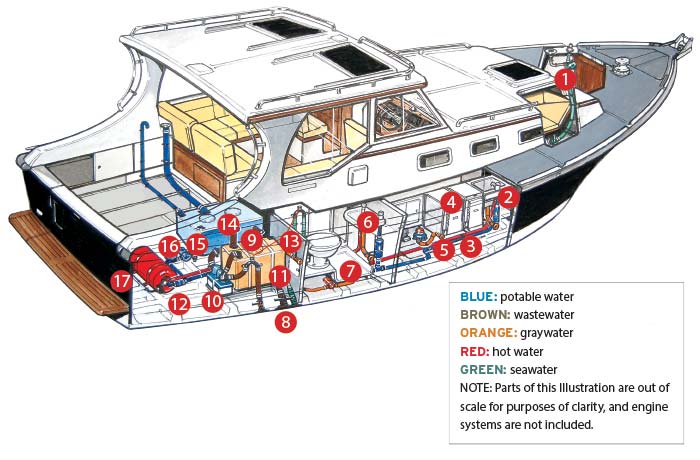
Illustration: Dick Everitt
- Anchor/foredeck washdown with pressure pump and foot switch
- Galley sink. Filter for cleaner cold water. Sink drains above waterline at max heel. All thru-hulls must comply with ABYC standards
- Condensation drip tray drains overboard above waterline at max heel per ABYC standards
- Icemaker door open when not used
- Bilge pump drain well above water line on max heel. Smooth inner lining to hose. Vented loop may be needed if drain is near or below water line at max heel
- Head sink with filter on cold water and drain above waterline at max heel
- Shower sump pumped overboard to discharge above water line at max heel. Shower drain hose goes to shower evacuation pump. Head intake hose has a strainer and thru-hull
- All thru-hulls equipped with seacocks. Note double hose clamps
- Holding tank vented with minimum bends for better airflow
- Head discharges to MSD Type 1 with Y-valve
- Holding tank has pumpout hose and gravity discharge overboard after treatment where it's legal
- Water heater has anti-backflow valve to prevent expanding hot water from entering cold water system (This tank is shown lying on its side, an installation seen on some boats. Normally, hot-water tanks are upright.)
- Anti-siphon loops and valves where appropriate
- Potable water tank with fill and vent
- Potable water tank has sediment filter prior to pressure pump
- Accumulation tank diminishes pulsation
- Scuppers drain cockpit. Some boats need scuppers with hose to discharge
Seawater Washing (1) — Seawater systems such as anchor washdown and dishwashing with a seawater foot pump (if you're in clean water and rinse well with potable water) can conserve water. Frequently bathing in saltwater causes skin problems in many people; a freshwater rinse helps. Washdown water pump should be a short distance from the thru-hull but above the waterline.
Drinking Water Purity (2, 6) — When in question, can be improved by adding a small amount of bleach. Some authorities recommend adding approximately 1 teaspoon of household bleach with no perfumes, dyes, or other additives per 10 gallons of water. If possible, agitate the water after adding bleach and then let it sit for an hour. Chlorine odor will dissipate after a day. Bleach may initially make the water to which it's added unclear because it's killed the “bugs.” The water clears as these settle to the bottom. Ultimately they should be flushed out. It's preferable and safer to add product manufactured for the purpose; camping stores are good sources. If you have questionable water purity and no way to remedy it, boil water before drinking. Drinking-water filters such as GE's FXUVC under-the-sink cartridge remove many impurities and greatly improve taste. A water system UV light, such as those used in some reverse-osmosis systems, can kill viruses.
Air Conditioning & Refrigeration (3) — Condensation drain trays should occasionally be inspected to clear any blockage in drain hoses, which should preferably drain overboard rather than into the bilge. If trays don't drain fully, they'll develop a musty odor that will be circulated by the air handler.
Icemakers (4) — Should be left open and off when not being used for a few days or longer to avoid odor and mold. Often the incoming water line is behind the unit in an area warmed by the unit. This facilitates stagnation and odor, particularly in the filter that may be in that area. When in use, the ice bin should be dumped at least every few days to keep water flowing. Good ventilation helps.
Bilge Water (5) — Oil-absorbent pads in bilges under the engine and whenever there's oil-spill potential are critical. They must not interfere with the operation of a bilge-pump float switch. Always clean loose fuel and oils out of the bilge with an oil-absorbent pad, and discard appropriately. Proper bilge-pump installation is critical and will vary with different boats. The hose interior should be smooth, the water column in the hose should be no more than needed, and great care must be taken to avoid backflooding from the sea. Visual and audible alarms at the helm are crucial.
Bilge pump hose should exit well above water line at maximum heel within the parameters of ABYC standards. Pumps should be in sections where water can pool more than minimally.
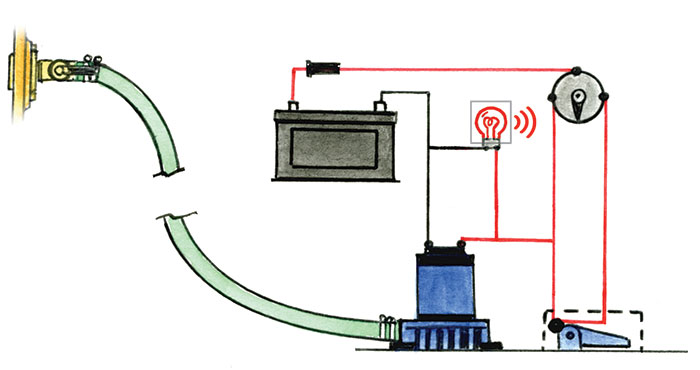
A basic bilge pump schematic.
Sumps (7) — Those used for showers should be cleaned and flushed through regularly, even if the shower isn't often used. Shower sumps should discharge well above the water line at maximum heel within the parameters of ABYC standards.
Thru-Hulls (8) — Should be checked for obstruction every time you haul the boat and/or dive the bottom. Inspect them with a strong light, such as Streamlight's Stylus Pro 360 , while hauled. While in the water, you may need to carefully (to avoid damaging hose and valve) work an old table knife or similar tool around inside the hole to clear it of barnacles and other obstructions. A carrot peeler makes a good tool for small holes. If the hole is covered by an external filter, this should be removed, when hauled, for painting inside, inspection, and cleaning.
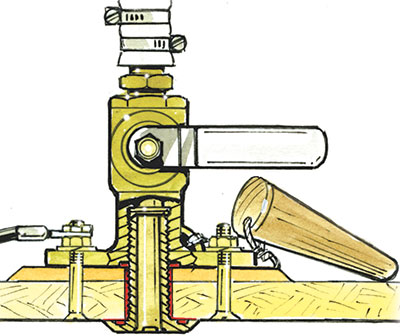
Water Passages (8, 6) from thru-hull openings — Sinks, heads, engines, air conditioners, refrigeration, bilge pumps, and other components use thru-hull openings and hoses. Regularly inspect and operate all thru-hull valves . Some valves periodically require disassembly and lubrication or cleaning while the boat is hauled. You may need to close one quickly when a breach occurs in a water passage inside the boat.
Regularly inspect all hoses and connections . Old or suspect hoses will deteriorate over time and should be replaced. Eventually, wire inserts will rust and harm inner and/or outer hose walls. Preferred hose clamps are AWAB brand or similar. Double the clamps (unless doing so would cut into the hose, in which event a longer hose barb is indicated) and regularly inspect.
All components should be 316 grade stainless or better. Cheap hose clamps tend to rust and break. Use hose appropriate for the job, such as marine-sanitation hoses for heads. ABYC standards should be followed in these and all other aspects.
Holding Tank (9, 10, 11) — Some chemicals added to holding tanks can harm the environment if spilled, either from the boat or from pumpout-disposal systems and system failures. Various companies market what they claim to be environmentally friendly holding-tank additives with varying degrees of effectiveness. Some boaters install a Raritan ElectroScan MSD plumbed to treat and discharge overboard where it's legal, and treat and discharge into the holding tank at other times.
Head Water (10) — Regular addition of products such as Star brite Instant Fresh Toilet Treatment and Raritan CP help keep head water odorless and improve operation of the head . Petroleum-based products can harm valves, seals, and gaskets. Check manufacturer's recommendations. Regularly pouring white vinegar into the head and flushing will help diminish calcium buildup on inside walls of head plumbing. Raritan's CH is stated to be environmentally harmless and is specially formulated to remove heavy calcium buildup as well as prevent buildup if used regularly.
Head discharge hoses should be specified for MSD use. Other types of hoses are usually more likely to develop calcium buildup, deposits, blockages, and odor permeation. Plumbing the head to flush with fresh water can reduce odor. The head intake hose is positioned as it is in the illustration for clarity, but should be far enough from the head discharge to avoid sucking up waste.
Water Heater (12) — Should be standing upright with a backflow valve between the incoming cold water and the heater. Requires periodic flushing by squirting in clean dock water with a water hose under moderate pressure through a discharge port at top, squirting around inside as much as practical, and draining through open intake port at bottom. Some water heaters have an anode for cathodic protection that should be checked yearly.
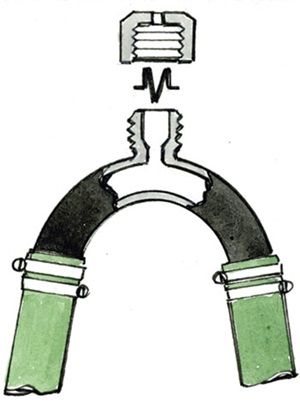
Anti-Siphon Loops and Valves (13) — Are needed in some hoses that exit underwater to prevent water from siphoning into the boat. Whether anti-siphon valves and loops are used depends in part on the location of relevant components in the boat and whether they're below the waterline or could end up below the waterline. These components may include heads, sinks, and engines and their raw-water intake and exhaust systems. As a precaution, when you're away from your boat, close the underwater seacocks.
Potable Water Tank (14, 15, 16) — Should be treated periodically with a product such as Star brite AQUA Water Treatment & Freshener to remove odors, scale, and bad taste. Also, thoroughly flush tank with clean water and pressure nozzle. Drain from bottom if possible; if not, pump it out. Follow manufacturer directions when applying anything to drinking water.
Follow instructions and warnings for cleaning additives, particularly with aluminum tanks. New tanks, especially fiberglass or plastic, may smell of the material of which they're made. Often, adding baking soda to the water will help, as well as with other odors later. The amount depends on the severity of the problem and volume of the tank.
Clarity of water may vary with source, such as from wells, cisterns, public water works, and reverse osmosis. The latter source, if coupled with a UV light and maintained well, probably produces the best water.
Drains and Scuppers (17) — Cockpits, side decks, and other areas of a boat normally have drains to rid the boat of rain and boarding seas. Test these regularly with a hose to be sure they're draining adequately. Leaves, plant material, dirt, and other debris can quickly obstruct them. Boats can sink if drains aren't kept clear. Clear them with a high-pressure hose nozzle or plunger.
Related Articles
The truth about ceramic coatings for boats.
Our editor investigates the marketing claims of consumer-grade ceramic coatings.
Fine-Tune Your Side Scan Fishfinder
Take your side-scanning fishfinder off auto mode, and you’ll be spotting your prey from afar in no time
DIY Boat Foam Decking
Closed-cell foam flooring helps make boating more comfortable. Here’s how to install it on your vessel
Click to explore related articles
Technical Editor, BoatUS Magazine
One of the top technical experts in the marine industry, Tom Neale, BoatUS Magazine Technical Editor, has won nine first-place awards from Boating Writers International, and is author of the magazine’s popular "Ask The Experts" column. His depth of technical knowledge comes from living aboard various boats with his family for more than 30 years, cruising far and wide, and essentially learning how to install, fix, and rebuild every system onboard himself. A lawyer by training, for most of his career Tom has been an editor and columnist at national magazines such as Cruising World, PassageMaker, and Soundings. He wrote the acclaimed memoir All In The Same Boat (McGraw Hill), as well as Chesapeake Bay Cruising Guide, Vol. 1. These days, Tom and his wife Mel enjoy cruising their 2006 Camano 41 Chez Nous with their grandchildren.
BoatUS Magazine Is A Benefit Of BoatUS Membership
Membership Benefits Include:
Subscription to the print version of BoatUS Magazine
4% back on purchases from West Marine stores or online at WestMarine.com
Discounts on fuel, transient slips, repairs and more at over 1,200 businesses
Deals on cruises, charters, car rentals, hotel stays and more…
All for only $25/year!
We use cookies to enhance your visit to our website and to improve your experience. By continuing to use our website, you’re agreeing to our cookie policy.
Practical Boat Owner
- Digital edition

Boat water tank treatments tested
- Ben Meakins
- March 25, 2015
Potable water is a valuable resource on a boat – but how do you keep tank water fresh? Ben Meakins and the PBO team test water treatments and filters to find out
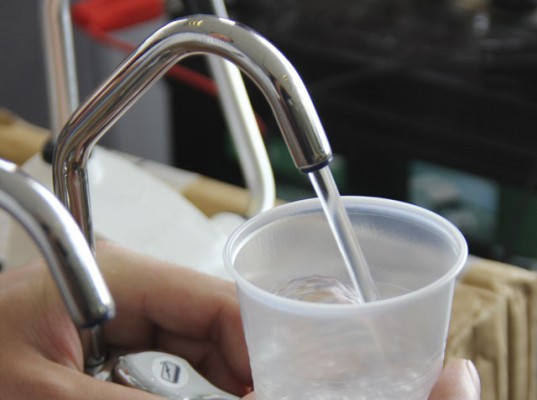
The ‘tank taste’ you get from a boat’s fresh water tank can be pretty unpalatable, especially if you’re feeling seasick. Mostly this taste is disguised when used for cooking, but it makes your plain drinking water unpleasant and can produce a thick scum on top of your tea – not to mention making said tea taste terrible.
To overcome the drinking water problem many sailors drink only bottled mineral water and use the boat’s tank water just for cooking. But the plastic bottles take up a lot of space, they’re not exactly environmentally-friendly and it’s a shame not to be able to use tank water for its intended purpose.
But how do you keep tank water tasting fresh? We tested seven methods of making your drinking water more palatable, ranging in price from 54p to £355. These could be divided into the following groups:
- Activated carbon filters These work by passing the water through a carbon filter to remove the taste and smell. It won’t remove bacteria from the water, even though some filters have silver to inhibit the growth of bacteria in the filter. On first use, they must be flushed to remove black carbon particles.
- Sub-micron filters If you want to remove bacteria and other nasty stuff from the water, you’ll need a sub-micron filter. These can remove impurities down to 0.1 micron. Some of the filters on test have additional filters which use surface absorption and a polarised casing to remove chemicals and heavy metals. Many of these filters require a significantly higher pressure to work. Some solely sub-micron filters won’t do anything about taste and smell, however – you’ll need a charcoal filter for that, too.
- Additives We tried a couple of proprietary tank treatments, Aqua Clean, a chlorine-based product, and Aqua Sol. These can be added to the tank water to sterilise it, and are recommended for sterilising and flushing out a tank. They might make the water safe to drink, but they do often result in an unpleasant taste. Following a tip on the PBO forum we also tried using lemon juice as a water treatment.
How we tested them We needed water with a suitably unpleasant taste and odour, so took a sample from a flexible fresh water tank on a small yacht and then passed some through each filter after following the manufacturer’s instructions to flush and prime each unit. We used a sample of each water to make a cup of tea, each brewed for 10 seconds, before adding 10ml of milk by syringe. We then conducted a blind taste test, with testers scoring each sample for flavour, aftertaste and odour.
Control Samples
Plain tap water WATER *** TEA **** Straight from the tap at the PBO office in Poole, Dorset, this got a surprisingly low score in our blind taste test for the water, with a slight chlorine aftertaste, but was otherwise perfectly drinkable. For the tea it scored well. Plain tank water
Untreated tank water WATER * TEA * Unsurprisingly this got the lowest score of all. It had a stale flavour, a plasticky odour and a lingering aftertaste that one tester described as ‘old socks’ that got worse with time. Tea made with this water had the most scum on top and a plasticky taste, with a hint of the chlorine (Milton) used to sterilise the tank in the winter.
Water treatments tested
You can read the individual reviews of each of the following products by clicking on the title. For our conclusions, scroll down….
AquaClean Tabs
Lemon Juice
Water filters tested
Penguin Hydropure
Nature Pure QCII
Aquatiere Super Water Filter
Jabsco Aqua Filta
Whale AquaSource Clear
Seagull IV X-1
PBO Verdict

We found untreated tank water most unpleasant…
The tank water was unpleasant to drink – and adding any of the treatments to it served only to alter the taste rather than improve it. All of the filters tested improved the flavour and aftertaste, however.
The Seagull IV and Nature Pure QC filters gave by far the best taste improvement, and also remove bacteria and other substances, making even contaminated water safe to drink.
The charcoal filters all made the water more palatable, with the Jabsco Aqua Filta coming out best of these in our tests. You will need to ensure the water is safe to drink, ideally with the addition of a treatment before it is filtered. We found that the filters removed the taste of chlorine when Aqua Sol was added in a mild dose and this combination of a subtle water treatment to kill bacteria and a charcoal filter to remove any bad taste would seem to be the way forward if you want safe drinking water on a budget.
The Nature Pure system, while not cheap, does all this while delivering a taste close to that of mineral water.
You are using an outdated browser. Please upgrade your browser to improve your experience.
- Water Tanks & Purification
Accumulator Tanks | Bilge Pump Switches | Bilge Pumps | Calorifiers (Water Heaters) | Freshwater Pumps | Pump Spares | Shower Pumps | Sinks, Taps & Showers | Wash Down Pumps | Water Tanks & Purification |
We stock a range of solutions for storing water aboard your boat, from flexible water tanks from Plastimo to the rigid Force 4 Diablo Smart Tanks. We also sell a range of water filters and purifiers to keep your fresh water tanks and pipes clean and free from bacterias.

- Chandlery Below Deck
- Engine Oils, Lubricants & Protection
- Engines Inboard & Outboard
- Fuel Tanks & Cans
- Gauges & Engine Room Equipment
- Holding Tanks & Accessories
- Jerry Cans, Tanks & Fuel Supply
- Pumps & Water Systems
- Showers, Sinks & Taps
- Strainers & Filters
- Toilets & Accessories
- £6.00 - £56.00
- £56.00 - £106.00
- £106.00 - £156.00
- £156.00 - £206.00
- £206.00 - £256.00
- £256.00 - £330.00
- Triangular 100 Litre
- Triangular 55 Litre

- 401-683-4434
- [email protected]
- Request for Service
- Commissioning
- Refit Services
- Testimonials
- Upcoming Events

Waste & Water Tanks
All marine holding tanks, waste tanks, water tanks and fresh water tanks are made to order..
Our wide variety of marine tank shapes and sizes can be sorted through using our tank finder below. All fresh water tanks and holding tanks used for marine sanitation are roto-molded polyethylene without seams making for a strong tank that will not split allowing for a more reliable container for your fresh water or sanitation needs. All fill and out flow fittings will be installed to your specifications making sure that it will match up to your requirements.
How to Search for a Tank
Start by choosing the shape of the holding tank or water tank based on the location it needs to fit into. Next insert the dimensions. You may also insert a specified amount of gallons. Our tank finder will sort our large inventory of tanks and come up with a number of suggestions.
Utilize the search boxes below to start your search and if the tank size you are looking for doesn’t come up give us a call at +1 (401) 683-4434 or e-mail us at [email protected] and we can talk with you about a custom built tank.
Our Tank Selection Guide
| |
| Tank Number must be preceded with " " " " for Waste & Water Tanks or " " or " " for Fuel Tanks* |
| tanks are Diesel Tanks |
Rectangular Tanks
| Largest Measurement | Middle Measurement | Smallest Measurement | |
|---|---|---|---|
Side tanks are shaped to fit along the side of the yacht. Many people find a spot under a settee which is perfect for a side tank. When selecting a side tank, be sure to check for “handedness”, some fit better port or starboard
Other Tanks
Other tanks are oddball shapes with funny notches and cutouts. While hard to categorize, you may find one that’s perfect.
Tank Measuring Guide for Waste & Water Tanks
DOWNLOAD OUR TANK MEASURING GUIDE HERE
To measure for a bow tank, attach a string fore and aft in the compartment at the height that you think the top of the tank should be. Next, at three inch intervals along the string measure the depth of the compartment. Using the same three-inch intervals measure the width of the compartment. Now you will have some data to use when looking at the list of tanks. You can use the same method in reverse if you have the dimensions of a tank. Set the string at the tank height and make sure all of the boat’s dimensions are larger than the tank’s. If the space is too close to call, then make a cardboard mock up of the tank and see if it will fit. Finally check to see that the tank will fit down the hatch and into the tank bed!
Pick up your phone and order the tank right away, call: +1 (401) 683-4434
Start at the deep side of the space and determine the height. Then measure the width of the space at the forward end and try to make a reference line on the bulkhead. Now measure the depth of the space every three inches along the reference line. Take the same measurements at the aft end of the space. Now with your data check to see which tanks will fit. When you select a tank double-check the tank measurements in the boat. Check to see that your tank will fit through companionway to its final resting-place.
Now run, don’t walk to a phone and order the tank, call: +1 (401) 683-4434
Measure the longest dimension first then the other two lengths. All the rectangular tanks are listed with the long side first. Often it is easier to partition an odd shaped space and put in a rectangular tank or two, than trying to fit and odd shaped tank into an odder shaped space. Especially when you need to put in a platform for the tank to sit on.
Once you have selected the tank call me A.S.A.P. with your tank order. +1 (401) 683-4434
IF ALL ELSE FAILS Get a tape measure, a cell phone, a pencil, a pad, some string, some scotch tape, and my phone number. Go down to the boat and we’ll chat. +1 (401) 683-4434 .
Tank Fittings
Discharge Fittings (waste)
We use dip tubes for discharge, they can be located on the top side or the top of a vertical side. Dip tubes are 1.5″ female pipe thread and will accept straight or 90-degree pipe to hose adapters. Dip tubes extend down to the bottom of the tank. You will need 4.5″ of clearance from the sidewall of the tank for our standard fittings and 2.75″ for our low profile fittings.
Inlet and Vent fittings
Inlet and vent fittings can be located on the top or the top of a vertical side of the tank. The inlet fitting is 1.5″ female pipe thread and the vent can be .5″ or .75″ female pipe thread. The inlet fitting requires 4.5″ of clearance from the sidewall of the tank for a 90-degree fitting. Vent fittings require 2″ of clearance for .5″ 90 degree fittings and 2.25″ of clearance for .75″ fittings off the sidewall of the tank.
Suction Fittings (water tanks)
Suction fittings can be at the bottom of the tank or the bottom of a sidewall of the tank. Suction fittings can be .5″, .75″, or 1″.
Waste and Water Tank Ordering Instructions
Before you order your waste/water tank make sure you have completed the following items:
- Select the tank that you would like by choosing an OLT #
- Complete a diagram on how you would like to have the tank set up depicting the exact locations of FPT fittings and dip tubes. You can use the schematic for the tank you are ordering from the web page and add the fitting locations.
- Select the proper fittings or dip tubes from our web store, based on what is on your drawing, and added them to your shopping cart.
- Check the shopping cart and made sure that all items are accounted for and billing and shipping information is correct.
- Fax or email us a copy of your diagram so that we can build the tank to your specifications, again this is very important because all sales are final there are no returns on tanks.
FOLLOWING THESE STEPS IS VERY IMPORTANT BECAUSE ALL TANKS ARE BUILT TO ORDER THERE ARE NO RETURNS ON TANKS

Product Categories
Store search, site search, if you are ordering a waste water tank.

Please verify you are a human
Access to this page has been denied because we believe you are using automation tools to browse the website.
This may happen as a result of the following:
- Javascript is disabled or blocked by an extension (ad blockers for example)
- Your browser does not support cookies
Please make sure that Javascript and cookies are enabled on your browser and that you are not blocking them from loading.
Reference ID: dad04bb1-76d4-11ef-99da-511b40d794db
Powered by PerimeterX , Inc.

COMMENTS
3027 Capital Blvd Ste 111 , Raleigh NC 27604-3399. home. categories. plumbing & ventilation. marine plumbing. freshwater systems. water tanks. If your boat's water tank has seen better days and needs to be replaced, or if you want to upgrade the one you already have, West Marine has you covered with a selection of flexible and rigid water ...
These boat water tanks are available for most boat makes and models and can be used as either a new or replacement water tank. Capacities range from 1 gallon to 202 gallons. Tank thickness is available from 0.1875 inches (3/16") to 0.375 inches (3/8"). Many tanks are rectangular in shape but custom-molded tanks are available for particular boat ...
15. 10. RW-B280. $201.00. 8 Gallons. RW-B121 Ronco Plastics 8 Gallon Plastic Marine Water Tank without Fittings. 33 L. 7 W. 11 H.
Let us help. 206-632-4462. Shop water tanks at Fisheries Supply. Explore our boat fresh water tanks, including flexible tanks. Shop for water tanks monitors, senders, treatments, & more.
4 Gallon Marine Holding Tank. 26" Length x 11" Width x 7" Height. B525. PRODUCT SPECS. 5 Gallon Marine Holding Tank. 12 1/4" Length x 12 1/4" Width x 8 1/4" Height. B268. PRODUCT SPECS. 5 Gallon Marine Holding Tank.
Marine Water Tanks. Marine water tanks are made to easily be installed on your boat, yacht, cruiser or any other marine vessels. Marine water tanks and boat tanks are designed for storing potable water in boats and vessels equipped with plumbing. Our marine water tanks are manufactured by industry leaders including Ronco and Todd.
If there's an RV or marine water tank available in stainless steel, or aluminum, we can fabricate the same shape and size container out of lighter-weight plastic materials, including: Polypropylene. PVC. Polyethylene. Request a quote for a custom marine holding tank from Miller Plastic Products below. These custom fabricated tanks start at ...
Tek-Tanks have been manufacturing plastic tanks for boat builders and boat owners since 1991. Ranging from large 1500 litre plastic diesel tanks to 1 litre plastic water manifolds, there are not many plastic tanks we have not done. Waste holding tanks now comprise a large part of our business so we now offer plenty of information on the design ...
Tank size depends on the space available and your needs (anywhere from one to ten gallons per person per day might be consumed). Make sure your tank's deck fill has a tight seal and that your tank's vent terminates the boat so your drinking water supply won't be fouled by outside water. Hose: Most pumps and fixtures are designed for 1/2" ID ...
Spectra Katadyn PowerSurvivor. As a compact and energy-efficient watermaker, the Spectra Katadyn PowerSurvivor is arguably the most affordable watermaker currently available on the market. We are talking about a model that only requires 4 amps to desalinate water for your sailboat.
There are two types of boat tanks: fresh water tanks for storing potable water and holding tanks for collecting and storing of grey water or black water. National Tank Outlet's marine tanks are manufactured from high-quality polyethylene resin that is BPA free, FDA-approved for potable water, and ANSI NSF 61 compliant. ...
Drain the tank completely. Measure 1 teaspoon/gallon of household bleach (aluminum) or vinegar (plastic) into the tank and add fresh water until it's full. Let it sit for 24 hours to sterilize, then drain the water. Fill with fresh water and drain repeatedly until all the bleach/vinegar odor is gone.
For treating water that is clear and chlorinated at the tap, 1 teaspoon of bleach per 50 gallons will provide a 2 ppm booster, the very most that should be needed. Chlorine aftertaste is the most common onboard water-quality complaint; however, chlorine at the tank can be efficiently removed with carbon filtration.
As a precaution, when you're away from your boat, close the underwater seacocks. Potable Water Tank (14, 15, 16) — Should be treated periodically with a product such as Star brite AQUA Water Treatment & Freshener to remove odors, scale, and bad taste. Also, thoroughly flush tank with clean water and pressure nozzle.
Description. If you want to add more water storage on your boat and installing a rigid tank is not possible / practical, there is an alternative. The Plastimo Flexible Fresh Water Tank holds 52 gallons of water and must be used in a horizontal orientation. As long as you have enough access to insert, secure and plumb the tank in the location ...
We offer a wide selection of marine water tanks at the best prices. All of our marine water tanks are manufactured from FDA approved resin. These tanks can be used for storing fresh drinkable potable water. Tank-mart's marine water tanks come with custom fittings installed. Any boat, any vessel, any yacht, Tank-Mart has your water tank.
We needed water with a suitably unpleasant taste and odour, so took a sample from a flexible fresh water tank on a small yacht and then passed some through each filter after following the manufacturer's instructions to flush and prime each unit. We used a sample of each water to make a cup of tea, each brewed for 10 seconds, before adding ...
Water Tanks & Purification. We stock a range of solutions for storing water aboard your boat, from flexible water tanks from Plastimo to the rigid Force 4 Diablo Smart Tanks. We also sell a range of water filters and purifiers to keep your fresh water tanks and pipes clean and free from bacterias. Check out the Force 4 guide to maintaining your ...
Marine water pressure tanks serve as a buffer between pressure-controlled pumps and water outlets and faucets. Accumulator tanks can be mounted in any position and are used with saltwater or as a freshwater accumulator. Sometimes referred to as a marine expansion tank, accumulators are offered up to 2 gallons and protect against pump cycling ...
Check to see that your tank will fit through companionway to its final resting-place. Now run, don't walk to a phone and order the tank, call: +1 (401) 683-4434. Rectangular Tanks. Measure the longest dimension first then the other two lengths. All the rectangular tanks are listed with the long side first.
West Marine offers accumulator tanks by leading marine manufacturers such as Jabsco, Groco, Shurflo, Flojet, and Johnson Pump. Tank construction includes models made of plastic, painted steel and stainless steel. Capacities and rated pressure vary widely, so be sure to select a tank that is a match for the system on your boat.
3027 Capital Blvd Ste 111 , Raleigh NC 27604-3399. home. categories. plumbing & ventilation. marine plumbing. freshwater systems. water tanks. flexible water tanks. Check your spelling or try fewer, more generic words.